- PRIVACY POLICY


Panay Island Visitors Guide

This brief guide to Panay Island will help you plan your trip. It contains information on what to do, eat, and drink as well as the must-see spots and the best hotels.
ABOUT SEE & DO EAT & DRINK STAY BUDGET ADVICE

The sixth largest and fourth most populous island in the Philippines, Panay is composed of three cities ( Iloilo City , Passi City and Roxas City) and four provinces ( Aklan , Antique , Capiz , and Iloilo ). The island is blessed with mountains, rivers, waterfalls, lakes, beaches, and of course a rich marine ecosystem, thus the abundance of seafood on the island.
While farming and fishing are major industries on the island, it has a lot of potential for tourism as several of its natural tourist spots are fast-becoming popular among local and foreign tourists alike. Additionally, its close proximity to world famous Boracay Island which is geographically part of Aklan province makes Panay Island even more attractive to tourists.

Best Time to Visit
It’s best to visit the Philippines during the dry season . Dry season in the Philippines spans from November through April . These are the summer months in this country.
Be aware that temperatures and humidity levels are particularly high in April and May .
The best time to be a beach bum and explore the islands is from March to May.
TIP: This guide recommends that booking for Panay Island summer trips should be done as early as possible, at least a month before your travel dates, since resorts get fully booked early.
The period from June to October is the rainy (wet) season and is best avoided due to the high possibility of typhoons. The typhoons can not only be destructive, but most tours and activities are cancelled under such circumstances. Transportation via plane and boat is also seriously impacted as well. This happens frequently so beware!
This guide recommends traveling to Panay Island in April-May or in November-December , just before and just after the rainy season. This will likely bring fewer crowds, yet pleasant weather, and is also a great time to score a travel deal.
Alegria Port | Batan Port | Cagban Port | Caticlan Jetty Port | Tabon Port | Tambisaan Port | Gibon Port | Colong-Colong Port | Dumaguit Port | Kalibo Jetty Port | New Washington Port
Lipata Port | San Jose Port
Culasi Port | Roxas Port
Dumangas Port | Estancia Port | Iloilo Port | Iloilo-Jordan Roro Port | Lapuz Port | Parola Wharf | Ortiz Wharf
Altavas Bus Terminal | Caticlan Bus Terminal | Kalibo-Banga Bus Terminal | West Aklan Transport Terminal
Pandan Bus Terminal | Libertad Ceres Terminal
Banga Bus Terminal | Ivisan Bus Terminal | Roxas City Bus Terminal | Sapian Bus Terminal
Ceres Northbound Terminal | Iloilo Central Line Bus & Jeepney Terminal | Molo Transport Terminal | Mohon Terminal | Tagbak Bus Terminal
Getting Here
There are many ways to get here depending on your starting point. This guide recommends using the following online tools to identify all the available options and cost for each while on Panay Island: Rome2Rio and PHBUS . The following are the major ports of entry for this destination.
Panay Airports
BUS TERMINAL
Panay Bus Terminals
Panay Seaports

Getting Around
The following are the modes of transportation available on Panay Island …
Car for Hire
Motorcycles
Ride-Sharing
SEE & DO
The following is your guide to places to see and activities to enjoy while on Panay Island.
1 | Hike Mount Madia-as in Antique
Mount Madi-as is the highest peak on the island and the second highest in Visayas next to Mount Kanlaon . It has an elevation of 2,117 masl and can be challenging to explore as the peak is relatively unexplored. It is known for its sea of clouds and is home to a diversity of flora and fauna. It has a total of 14 waterfalls feeding the major rivers in the province as well as the neighboring Aklan province .
2 | Experience kawa bath in Tibiao, Antique
Ever wonder what it feels like to take a dip into a large wok (locally called kawa) with herbs and petals floating above warm water? Try the Kawa Hot Bath in Tibiao, Antique . The experience that is now popular in various parts of the country pioneered in this part of Panay Island. The warm bath helps remove toxins as well as soothe and relax the body perfect to cap off a tiring day of exploring Tibia River and other tourist spots in Antique such as Bugtong Bato Falls, Seco Island, and Mararison Island.
There’s also Tibiao Fish Spa nearby where you can experience having your dead skin nibbled by three-inch fishes.
3 | Visit the heritage sites and churches in Iloilo
There are over 200 mansions in the city and around 30 of which are grand and built by sugar barons and elite families during the Spanish and American colonial era. Considering all those mansions, the city earned the moniker City of Mansions with Nelly Garden (also known as Lopez Mansion) as the most grandiose and considered the Queen of all Heritage Houses in Iloilo. Several of the mansions have been converted into museums and shops such as Molo Mansion (also called yusay-Consing Mansion), Casa Mariquit, Lizares Mansion (now Angelicum School Iloilo), and Camiña Balay nga Bato among others.
4 | Go on food tour in Iloilo
Iloilo may not be the Culinary Capital of the Philippines but a few dishes originated in the city have gained national popularity. La Paz Batchoy, named after its birthplace La Paz, is one of the country’s most popular noodle soup dishes. Famous batchoy houses in the city include Ted’s, Deco’s, and Netong’s. Other local dishes to try are pancit molo, KBL (kadios, baboy, langka), and chicken binakol. Also, don’t miss seafoods and Ilonggo sweets and desserts such as biscocho (twice-baked bread coated with butter and sugar), barquillos (wafer rolls), pinasugbo (deep-fried thinly sliced bananas coated with caramelized sugar), baye-baye (rice or corn and young coconut patties), and bandi (peanut brittle).
5 | See Southeast Asia’s biggest bell in Capiz
The Santa Monica Parish in the town of Pan-ay, Capiz houses an unusually large bell recognized as the biggest Catholic Church bell in Southeast Asia. The bell was completed in 1878 and made of more than 10 tonnes of coins given by townsfolk. The bell measures 5 feet in height and 7 feet in diameter. Its sound can be heard within an 8 kilometer radius and is still being used during Sunday masses and special occasions.
The church itself is historical, having been built in 1884 using coral blocks.
6 | Witness the festivals on the island
Two of the country’s biggest festivals, Ati-Atihan and Dinagyang, take place on the island. Both are celebrated in January and in honor of Santo Niño, the child Jesus. Other festivals to witness on the island are Paraw Regatta (the largest sailing event in the country and oldest traditional craft event in Asia), Fiesta de la Candelaria, Halaran Festival, and Binirayan Festival.
7 | Enjoy the beaches in Buruanga, Aklan
Boracay’s White Beach is not the only stunning beach in the province of Aklan. The beaches in Buruanga, particularly the Hinugtan White Beach, may be lesser known but they are equally instagrammable and lovely without the crowd and the high cost of Boracay. It has white sand and clear water perfect for swimming, snorkeling, and diving. Other beaches in Buruanga are Langka Beach, Nasog Beach, Tuburan Baybay Beach, and Tigis Beach. Aside from beaches, Buruanga is also blessed with caves, waterfalls, mountain parks, and the most popular dive site in Aklan – Ariel’s Point.
8 | Explore Bakhawan Eco-Park in Aklan
This 220 hectares mangrove forest in Kalibo is a reforestation project to prevent flood and storm surges in the shoreline of Barangay New Buswang. Dubbed as the country’s most successful mangrove reforestation project, Bakhawan Eco-Park has become a popular tourist attraction that features a 1.3 kilometers bamboo trail visitors can use to explore the forest.
9 | Feast on seafood in Roxas City
Dubbed as the “Seafood Capital of the Philippines”, Roxas City is the best place to indulge your seafood cravings. Freshly-caught fishes are cooked right at the fish farm. Aside from fish, you can also feast on oysters, squid, mussels, prawns, and crabs. And don’t leave the city empty-handed. You can buy dried seafood to bring to your loved ones back home.
10 | Tour Isla de Gigantes
Isla de Gigantes is a group of islands in the Visayan Sea and is part of the municipality of Carles in the province of Iloilo . It consists of about 10 islands blessed with pristine waters and white sand beaches. The jagged rock formations with lush greenery make the islands appear more charming and interesting. Abundant with fresh seafood, Isla de Gigantes is one of the most popular tourist spots in the province.
11 | Visit nearby attractions
Panay island is surrounded with other islands worth exploring. Of course, the world famous Boracay Island is approximately 10 to 15 minutes away from Caticlan Port . Guimaras Island , the Mango Capital of the Philippines, is 10-15 minutes boat ride away from Iloilo City . Negros Island , on the other hand, is an hour away via fast craft.
NOTE: Ati-atihan Festival (Kalibo) – Third week of January | Dinagyang Festival (Iloilo) – Fourth week of January | Paraw Regatta (Iloilo) – February | Sinadya sa Halaran (Capiz) – May |Binirayan Festival (Antique) – December

EAT & DRINK
The following is your guide to the flavorful food to enjoy and restaurants to try while on Panay Island.
1 | Tatoy’s Manokan and Seafoods
The top restaurant in Iloilo City based on reviews, Tatoy’s Manokan and Seafoods was made famous by their litson manok (roasted native chicken) although their menu now includes other chicken dishes, grilled and steamed seafood, ceviche (kinilaw), and pork dishes. They take pride in using fresh and basic local ingredients such as calamansi, coconut vinegar, and other spices to achieve that signature flavor. The restaurant started out with only three tables in the 1970s but now has two branches in Atria Park and near the Iloilo Airport .
2 | Breakthrough Restaurant
Satisfy your seafood cravings at Breakthrough Restaurant in Iloilo. At the restaurant, you get to enjoy them fresh and even have the chance to choose from the live seafood on display in the aquariums and have them cooked the way you want it. Their best sellers include baked scallops and oysters, kinilaw (ceviche), spicy crabs, and of course grilled fish. The restaurant is located along Villa Beach in Arevalo district but it has a branch in Plazuela Iloilo called Ponsyon by Breakthrough.
3 | Netong’s Original Special La Paz Batchoy
Netong’s is one of the pioneers and most recommended in the savory world of batchoy. It’s first eatery located in La Paz still operates up to this day however it has opened branches in newer business areas and more convenient locations such as Atria Park in Mandurriao. Your Iloilo food tour isn’t complete without a trip to Netong’s so make sure to drop by next time you’re in the city.
4 | Roberto’s
Located in Calle Real, Roberto’s is already an icon of Iloilo. It’s best known for tasty siopao oozing with filling in four variants; regular, jumbo (Chinese sausage, chicken pork adobo and egg), queen (bacon, Chinese sausage, chicken pork adobo and egg), and king (ham, Chinese sausage, chicken pork adobo and egg). Aside from siopao, their lumpiang shanghai, lomi, pancit canton, and sotanghon guisado are good too. The space is really small and is always full but it’s worth it.
5 | Latte Cafe
The top restaurant in Kalibo, Aklan, Latte Cafe has branches in Iloilo. The spacious restaurant has a modern vibe and is perfect for special celebrations or romantic date nights. It serves Filipino and Western favorites kare-kare, grilled pork, pakbet, and salad. Latte Cafe also has the reputation of having the best dessert in town.
6 | Ramboy’s
With branches in Aklan and Iloilo, Ramboy’s is known for their liempo and lechon manok. They also serve other Filipino dishes such as crispy pata and chopsuey.
7 | Coco Veranda Bar & Restaurant
You can’t leave Roxas City without feasting on seafood and one of the best places to indulge your cravings is in Coco Veranda, an open-air restaurant along the beach. It offers an extensive selection of Filipino dishes as well as Western and Asian dishes to cater to local and foreign tourists heading to or coming from the nearby Boracay Island. Try their baked scallops and oysters, shrimp balls, crab fuyong, calamares, and seafood paella.
8 | Cafe Terraza
Another seafood spot in Roxas City is Cafe Terraza, a popular hangout place located on top of a hill. It offers the scenic views of Roxas City and nearby towns. Aside from seafood, the restaurant also serves pork and chicken dishes such as sisig, grilled pork, and asado na pata. Their cakes are a must-try too!
9 | Mamamia
Mamamia may look like a Filipino restaurant with its bamboo interiors and furniture but it actually serves Italian favorites particularly pasta and pizza which is one of the tastiest in Antique. The prices are a bit high for local standards but considering the ingredients and quality of food, it is truly worth it.
10 | Seaview Restaurant
Seaview Restaurant of Phaidon Beach Resort serves a variety of local and international dishes. One of the most popular restaurants in Antique, Seaview has a great ambience and offers scenic views of the beach.
KNOWN FOR: Batchoy, Pancit molo, Biscocho, Seafood
WHERE TO STAY
There are many different types of accommodations available in this destination ranging from hostels to luxurious resorts. The following is your guide to our top choices for each range on Panay Island.
1 | Diversion21 Hotel (Budget)
2 | seda atria (mid-range), 3 | courtyard by marriott iloilo (luxury | resort).
This guide recommends using the following sites to conduct research online of where to stay on Panay Island or for a specific destination:
Book your room with these trusted online booking sites. Booking online in the Philippines almost always guarantees the best price and a room when you arrive. We use these sites frequently to get the best prices and enjoy convenient bookings. Click each of the buttons below to find the best place for you at the lowest rates:
TIP: Seda Atria is the best property to experience this destination.
Book Online & Save Money
Book Your Trip Flights Hotels Transportation Travel Insurance No-Fee Cards
Suggested Budget
Use the chart below to get an idea of how much to budget daily. Actual amounts will depend on YOUR travel style. Keep in mind these are daily averages … some days you’ll spend more, some days you’ll spend less. Prices are in USD.
Travel Costs
Accommodation.
A bed in a hostel dorm costs from 350 PHP ($7 USD), but smaller dorms can cost from 500 PHP ($10 USD). For a private double, prices start around 700 PHP ($14 USD).
Most budget hotels begin at 700 PHP ($14 USD) per night for a double room and usually include free wifi and breakfast. For a three-star hotel , prices begin around 1,400 PHP ($28 USD) per night. AirBnB is also widespread throughout the country, with private rooms starting from as little as 500 PHP ($10 USD) per night. For entire apartments, expect to pay at least 1,400 PHP ($28 USD) per night.
Resorts and luxury accommodations vary greatly from 1,400 PHP ($28 USD) to 5,000+ PHP ($100+ USD). However, there are some really nice resorts and luxury accommodations which are surprisingly affordable.
We use and recommend booking online to save money using HostelWorld , Agoda , Booking.com , and AirBnB .
Local food is extremely cheap, with street food costing under 50 PHP ($1USD). For an inexpensive meal at a local restaurant, prices start around 100 PHP ($2 USD). For a meal at a mid-range restaurant with drinks and table service, expect to pay from 200 PHP ($4 USD). Knowing that their target customers are primarily tourists, Western food venues can be pricey compared to Filipino food. Also, some of the ingredients need to be imported, which contributes to the higher cost. Western food (burgers, pizza, pasta, etc.) is much more expensive but is still relatively affordable at around 200 PHP ($4 USD) for a meal and drink.
Fast food like McDonalds will cost around 200 PHP ($4 USD). A beer at the bar will cost around 50-100 PHP ($1–2 USD).
A week’s worth of groceries will cost between 300-600 PHP ($6-12 USD) per person. However, food in this country is so inexpensive, and kitchens & refrigerators are hard to come by, I don’t recommend cooking your meals here since there is plenty of delicious street food to eat at very cheap prices. You won’t make it as good as they do and the food is too delicious to miss!
Transportation
There are many modes of transportation available in the Philippines and each varies greatly.
Public Transportation is cheap. Bus services on the islands are inexpensive. Local buses (called jeepneys) are the most common type of transportation in towns and cities. The fare is usually between 7-25 PHP ($.20–.50 USD).
On islands without a bus system, a taxi or tricycle is the only form of transport with fares starting at 50-500 PHP ($1-$10) USD for short trips.
Taxis are everywhere, and they’re very cheap. Most fares shouldn’t cost you more than 500 PHP ($10 USD) around town.
To get between islands, you’ll need to take a boat or to fly. There are ferries that connect the island together since they aren’t too far apart but, generally speaking, flights are the most realistic option.
Flights between islands usually cost about 2,000-3500 PHP ($40-70 USD). However, this isn’t the cheapest way to travel. It’s only recommended if you have limited time.
We recommend booking online to save money using: Skysca n ner , momondo , Kayak , kiwi.com .
Attractions & Activities
Most attractions and activities in the Philippines are pretty cheap. Most attractions throughout the area are FREE to enter, though some of the more well known and popular ones cost 5-100 PHP ($.10-$2 USD) to enter.
Depending on the activity, most day tours only cost around 1,000-1,500 PHP ($20-30 USD), oftentimes less. You have more bargaining power if you go with a group. If you are expecting to do some climbing, remember to pack some warm layers. It gets cold at the top!
Other activities such as Island Hopping, scuba diving, helmet diving, swimming with whale sharks, jungle trekking, canyoning, ATVs, jet skis, wakeboarding, cruises, parasailing, horseback riding, cultural experiences, and tours can cost as much as 1,250-5,000+ PHP ($25-100+ USD).
The Philippines is one of the least expensive places to learn how to scuba dive. Learning to scuba dive usually costs about 15,000-20,000 PHP ($300-400 USD), but often includes FREE accommodation for the duration of the course, which lasts three or four days.
Always book your tours and activities when you arrive. Stick to travel agents who are selling on the ground. If a travel agent won’t negotiate with you, move on to the next until you find one that will. Booking tours online is almost always more expensive.
Typical Costs on Panay Island in 2023 :
- Hostel Dorm Bed: 250-350 PHP ($5–7 USD) night
- Budget Hotel: 700 PHP ($14 USD) night
- Mid-Range Hotel: 1500 PHP ($31 USD) night
- Street Food: 50-150 PHP ($1–3 USD) meal
- Restaurant Meals: 200-300 PHP ($4–6 USD) meal
- Local Beer: 50-100 PHP ($1–2 USD) bottle
- 1.5L Bottle of Water: 38 PHP ($.75 USD) bottle
- Jeepney Ride: 7-25 PHP ($.20–.50 USD) ride
- Tricycle Ride: 20-100 PHP ($.5-2 USD) ride
- Taxi: 75-500 PHP ($1.50-10 USD) ride – use GrabTaxi app
- Long-Distance Bus Ride: 400-500 PHP ($8–10 USD) ride
- Public Ferry Ride: 200-300 PHP ($4–6 USD) ride
- Domestic Flight: 2,000-3,500 PHP ($40–70 USD) flight
- Island-Hopping: 1,000-1,500 PHP ($20-30 USD) trip
DOWNLOAD: Budget Planner Template
BEST NO-FEE INTERNATIONAL DEBIT & CREDIT CARDS
CHASE SAPPHIRE CREDIT CARD

VIEW DETAILS
CHARLES SCHWAB DEBIT CARD

CAPITAL ONE VENTURE CARD

The following is some of our best advice on traveling to Panay Island. Learn what you need to know BEFORE you go!
Tips & Hacks
he following are our Top 10 Tips when visiting this destination in the Philippines:
- Be aware that a tourist VISA is only 30 days. You can extend it upon arrival, or within the first 30 days, for an additional 30 days for a fee of approximately 3,000 pesos.
- Don’t buy into the fear factor. The Philippines has an unjustified reputation of being a dangerous place. It’s true there are security guards everywhere, but that is to deter theft.
- Manila is NOT the Philippines. Get outside of the cities to see the real Philippines.
- Don’t over plan. Boats, buses, and even airplane schedules are notoriously unreliable. Be flexible.
- Check the weather. The weather varies greatly throughout the Philippines daily.
- Typhoons can have a huge impact on your plans. Account for this when planning your trip.
- It’s not cool to raise your voice or show outward frustration in public.
- Be polite at all times. Realize that your country’s sense of humor may be different from Filipino humor and take this into account when interacting with Filipinos and while in public places.
- Things move at a slower pace. Accept it … don’t get frustrated … but do account for it.
- Don’t drink the tap water… but stay hydrated! Save money by buying large bottles (6-10 liters) of water and using it to fill your water bottle or hydration bladder in your backpack.
For a complete list of our travel tips & hacks, check out the following guide and be sure to download a FREE copy for yourself.
VIEW & DOWNLOAD : The Ultimate Travel Tips & Hacks Guide for the Philippines
Money Matters
The Philippines has its own currency called the Philippine Peso. Banks, ATMs, and money-changers can be found on the island. If you are exploring the neighboring islands or provinces, make sure to bring enough cash that will last until the next time you get to an ATM or bank since most tours, transportation, and budget accommodations only accept cash.
READ MORE: Money in the Philippines: Everything You Need to Know
Health & Safety
While overall the Philippines is a safe country to visit, as is Panay Island, you need to use common sense just as you would in any country, especially when traveling, and in a city, town, or area you are unfamiliar with.
Consult your hotel or resort front desk as they are more likely to give you reliable information than a random stranger on the street. Be careful when approaching strangers and selective about who you approach. Always pay attention to your gut feeling and follow it.
READ MORE: How to Avoid Scams & Thieves in the Philippines
There are many things to consider when traveling in order to stay safe … things that we may not be accustomed to during our normal everyday lives. The following are articles about tips on how to stay safe while traveling in the Philippines:
- 6 Common Accidents to Avoid
- How to Beat the Heat in the Philippines
- Taxi Safety Tips: Dos and Don’ts
- Motorbike Safety Tips
- Beach & Ocean Safety Tips
- Sun Safety Tips
TIP: The best way to avoid problems and stay safe is to travel with a local resident.
Staying fit & healthy can be challenging when traveling in the Philippines.
The tropical Philippines climate requires you to prepare for illnesses that you may not normally be accustomed to.
The following are our Top 10 Tips for Staying Healthy while Traveling in the Philippines:
- Maintain a Balanced Diet
- Stay Hydrated but Only Drink Bottled Water
- Get Plenty of Rest
- Allow Your Body Time to Adjust
- Keep Active
- Sanitize Often
- Be Aware of Food Safety Concerns
- Take Your Vitamins
- Practice Safe Sex
- Be Prepared Should You Get Sick
READ MORE: Stay Healthy in the Philippines: How to Avoid Getting Sick
Staying Connected
You need to have a local-based SIM card in order to stay connected when in the Philippines. Network giants such as Globe and Smart have SIM cards you can use to make calls, send text messages, and also to connect to the Internet. A SIM card costs around 50 PHP ($1 USD) and usually comes with a FREE load worth 50 PHP ($1 USD). You can buy a card containing a code you can enter on your phone to replenish your load or buy an electronic load that is available almost anywhere in the city.
While you may not have problems with signal strength when in the city, it is not always the case when on islands or in remote areas of a province. So when arranging for transportation pick up, say when renting a boat to take you to and pick you up from the island, it would be best that you make it clear what time you need to be picked up before the boatman leaves.
Recommended Travel Apps
Apps for smartphones and tablets can be useful both before you leave and while you’re traveling. Most are available for iPhones and Android phones.
The following are our Top 10 most useful travel apps on our smartphones when traveling in the Philippines:
- Grab (taxis/ride shares)
- Angkas (motorbike ride-hailing)
- WhatsApp (phone calls)
- Skyscanner (flights)
- Rome2Rio (transportation)
- Agoda (accomodations)
- Booking.com (accomodations)
- AirBnB (accomodations)
- Traveloka (flights, accomodations, activities)
- Klook (attractions & activities )
Be certain to download and set up apps BEFORE leaving on your trip to make certain each is installed and working properly.
For our complete list of travel apps that we use and recommend while traveling in the Philippines, checkout our checklist below. Download a FREE copy for yourself as a PDF.
READ MORE: The Ultimate List of Travel Apps for the Philippines
Trying to decide what to do when traveling to a destination for the first time can be a bit overwhelming given your lack of familiarity with the place along with all of the available options.
We’ve created the following itinerary to help simplify the process and ensure that you get the most out of your trip. Although we provide a 7 day itinerary for this destination, it can always be adjusted to fit the length of your trip.
VIEW : Panay Island 7-Day Travel Itinerary
Packing Checklist
The secret to a successful and stress-free trip is to start by using a packing list. This will reduce anxiety from the start and ensure that nothing important is forgotten when packing. To make this process easy for you, we’ve created a detailed packing list. Click the link below to download it for FREE now.
Carrying your checklist with you during your travels can be useful when repacking, by helping to ensure that you do not leave anything behind.
VIEW & DOWNLOAD : Our Ultimate Packing Guide & Checklist
Things to Remember
This guide recommends to take note of the following while traveling on Panay Island or in the Philippines in general.
There is a nationwide ban which prohibits smoking in public places including indoors, the streets, on sidewalks, in restaurants , and on public transportation, requiring smokers to use designated smoking areas. Selling tobacco to and purchasing from or for minors is also prohibited. Violators are subject to fines (up to 5,000 PHP | $100 USD) and even 4 months in prison.
The minimum legal drinking age is 18. Alcohol such as beer and hard drinks can easily be bought in grocery and convenience stores. The most common alcoholic beverage is beer, generally served cold. Local alcoholic drinks include tuba (coconut wine which is usually very strong) and potent moonshine-like clear liquors made from sugar or fruit. Imported beer, wine, and name brand hard alcohol are available but expensive.
Drugs are illegal in the Philippines. Don’t use, buy, or sell any non-prescription drugs while in the Philippines … not even marijuana. It is considered an especially heinous crime to buy from, for, or sell drugs to children. The penalties are severe … up to and including death.
Public nudity is illegal in the Philippines and is not tolerated. Most locals consider it offensive. There are laws which prohibit provocative and erotic clothing and swimwear, therefore carefully consider your clothings and swimwear choices to make certain they are not too revealing.
Foreigners & Expats
If you are not a Filipino citizen, remember that you are a guest when visiting this country … be certain to act accordingly. Respect the people, their customs, and the environment and wlidlife. You can be deported and banned … so behave … but have fun and enjoy all that this wonderful destination has to offer.
READ MORE : Practical Information about the Philippines
RECOMMENDED PRODUCTS
I always carry a Camelbak Hydration Pack with me when traveling. Not only does it allow me to pack all my daily gear and snacks, but it also has a 3-liter water bladder which holds enough water to get me through the entire day.
Bluetooth Speaker
Compact yet mighty, a bluetooth speaker setup is a breeze, and the sound quality it delivers for its size is nothing short of impressive. Beyond its audio prowess, it boasts exceptional durability, making it an ideal companion for outdoor adventures.
UV Shirt is an essential when travelling in a tropical country. Providing reliable protection during long hours in the water, not only comfortable but also ensures a secure shield against the elements.
Snorkel Gear
For my island-hopping escapades, a snorkel gear set has become indispensable. Designed to enhance the joy of snorkeling and free diving, each piece ensures comfort and functionality. Together, they create an immersive and enjoyable underwater experience.
Adventure Camera
As a long-time enthusiast of GoPro cameras, I can attest to their user-friendly nature, excellent image stabilization, and impressive footage quality. Waterproof and rugged, the GoPro is my reliable companion for capturing adventures in any environment.
When it comes to beach footwear, aqua shoes offer exceptional support, breathability, and overall comfort. Well-crafted and sturdy, it provides effective protection against rocky terrain, quick drying for added convenience, and easy maintenance. A must-have for any outdoor enthusiast.
CLICK FOR MORE TRAVEL GEAR
Don’t Forget …
Download our free travel guides.
We have dozens of guides to destinations throughout the Philippines. Download your FREE copy for your next trip today.

DOWNLOAD GUIDES

About the Author

Patrick is an entrepreneur, digital nomad, explorer, and photographer. Patrick is always in search of fun and adventure. He is well travelled throughout the world, and although location independent, his home base is Phoenix, Arizona in the USA. Patrick loves island lifestyle which is no wonder why he is so interested in spending time in the Philippines with it’s over 7,000 islands. Patrick created this site to share his knowledge of and experiences in the Philippines with Filipinos as well as other foreigners.
Leave a Comment X
Explore Panay Island

Plan Your Trip to Panay Island: Best of Panay Island Tourism
Essential panay island.
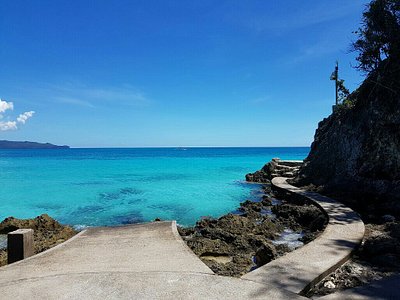
Panay Island Is Great For
Scuba diving.

Eat & drink
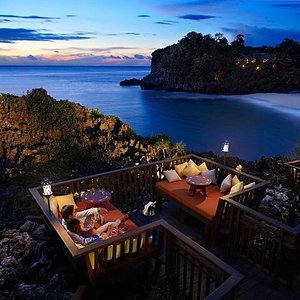

All Destinations , Asia , The Philippines
Panay itinerary: how to see the best of panay island.
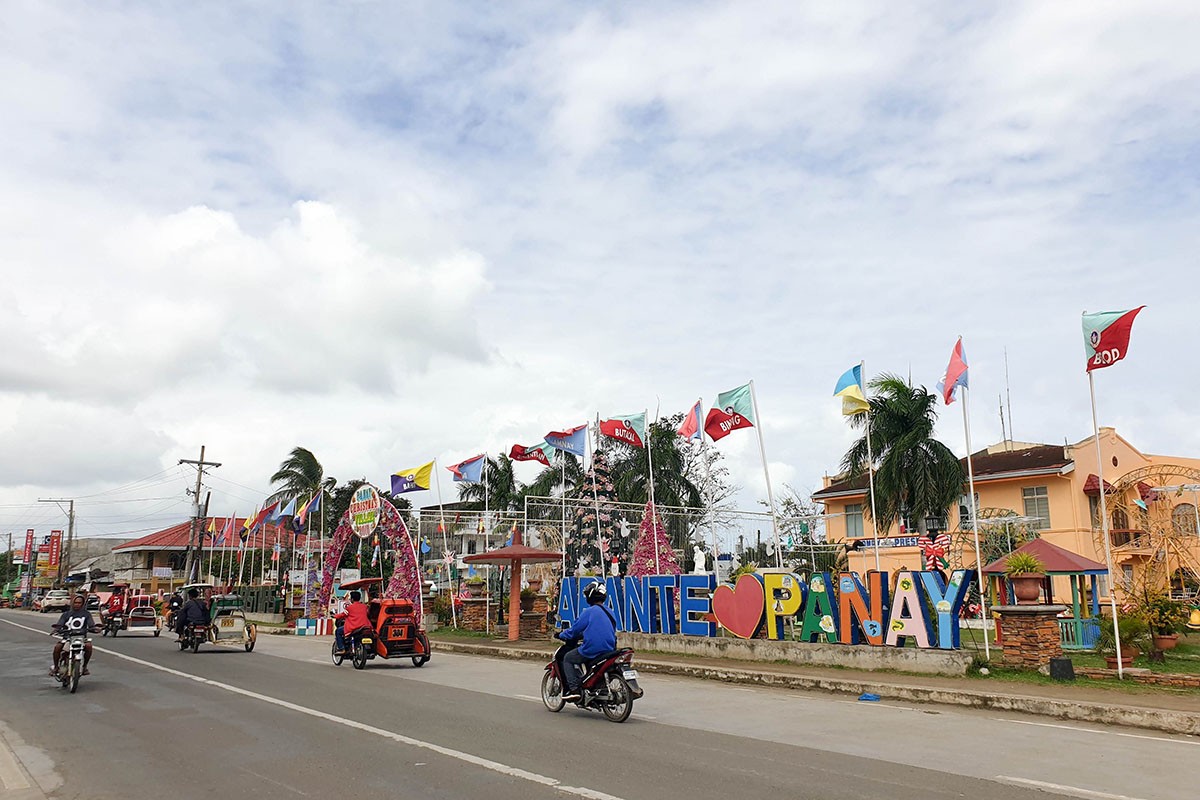
The archipelago of the Philippines is a corner of South East Asia that’s strikingly different from anywhere else on the continent. The unique fusion of Spanish, Chinese, American and Native cultures make it really a place of its own.
Despite travelling around a lot of South East Asia over the last three years, I’d never made it as far as the Philippines. I’m not exactly sure why – my path had just never taken me there. That all changed, however, when I was invited on a press trip to the country.
We visited Manila, Boracay and Panay Island on the press trip, and I got to see both beautiful beaches that the country is known for and authentic Philippine culture. Panay Island is a fantastic place to experience the best of both worlds – you’ve got the busy beaches of Boracay, the lesser-visited beaches of Isla Gigantes, and many cultural attractions in between.
So, here’s a Panay itinerary, perfect for anyone planning a trip to Panay Island. It was put together by the experts at the Philippine tourism board, and I’ll let you know what I personally thought of each stop as we go!
First, let’s start with not one, but two disclaimers (it’s all fun and games here, I promise)… Disclaimer: I was invited to the Philippines as a guest of the Philippine tourism board. However, all opinions remain my own.
Disclaimer 2: Some of the links in this post are affiliate links. If you make a purchase through these links, I get a small commission at no extra cost to you. This is just one way that I keep this site going!
Now that’s out the way, let’s delve into this Panay itinerary and see how you can plan a trip to Panay!
How to Get to Panay Island
We flew from Manila to Panay Island; Philippine Airlines and Cebu Pacific serve Caticlan and Roxas. You can also fly into Iloilo, the biggest city on the island, but that’s way further south.
If you’ve read this blog before, you’ll know that I <3 overland travel, so actually, if I was visiting Panay independently, I’d try to do a mad overland and sea adventure to get here. I’m not sure exactly how I’d do it, yet, but I’ve spoken to people and I know that it’s possible via the Philippine marine highway.
When to go to Panay Island
Travel in the Philippines can be a little seasonal due to its dramatic rainy-and-typhoon season. As a spoiler: one of our activities got rained off in late November, as there was a typhoon heading our way, so they can hit out of season. However, typhoon season generally ends in October.
The best months to visit Panay Island, and most of the Philippines, are thus December – June, when the weather is generally dry and sunny.
Panay Itinerary: The Stops
This Panay Island itinerary features a range of stops, each famous in their own way.
It includes:
Islas Gigantes
Panay Itinerary: Boracay
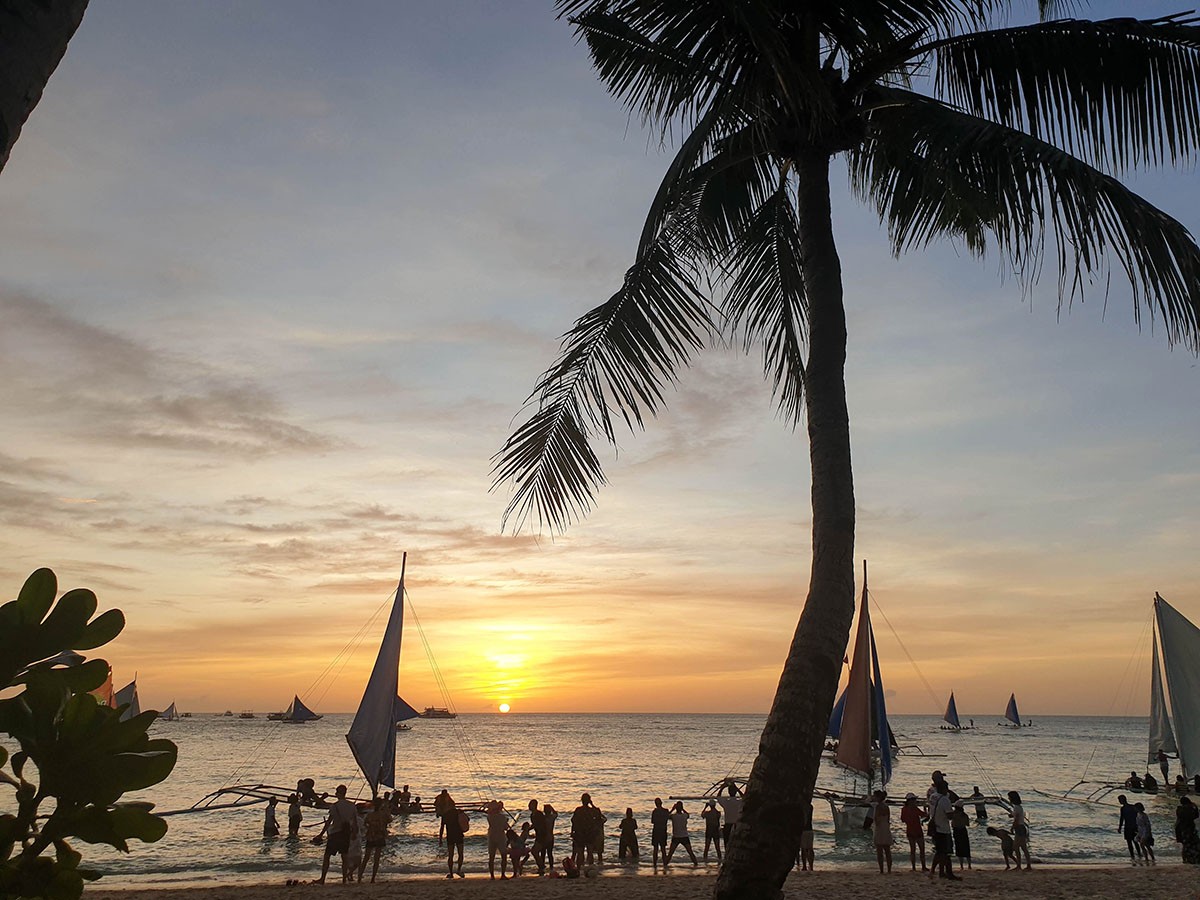
Let’s get real… most people who come to Panay Island hop straight over to Boracay, and most of them don’t leave. Boracay is a world-famous beach destination, which sprang into the public eye even more so last year when it had to close due to the ill effects of over-tourism.
However, Boracay is back, better than ever. It’s now more of a luxury beach destination than a backpacker’s party haven, and if you’re looking for beautiful beaches, luxury hotels, and plenty of bars and restaurants, Boracay is a good place to base for a couple of days.
If I’m being completely honest, Boracay isn’t really my thing – here are some of my thoughts about visiting Boracay in 2020 – but I can see the appeal for those who want to enjoy luxury and just flop out on a beach for a couple of days. It also balances this Panay Itinerary well, as the following few days focus more on cultural activities.
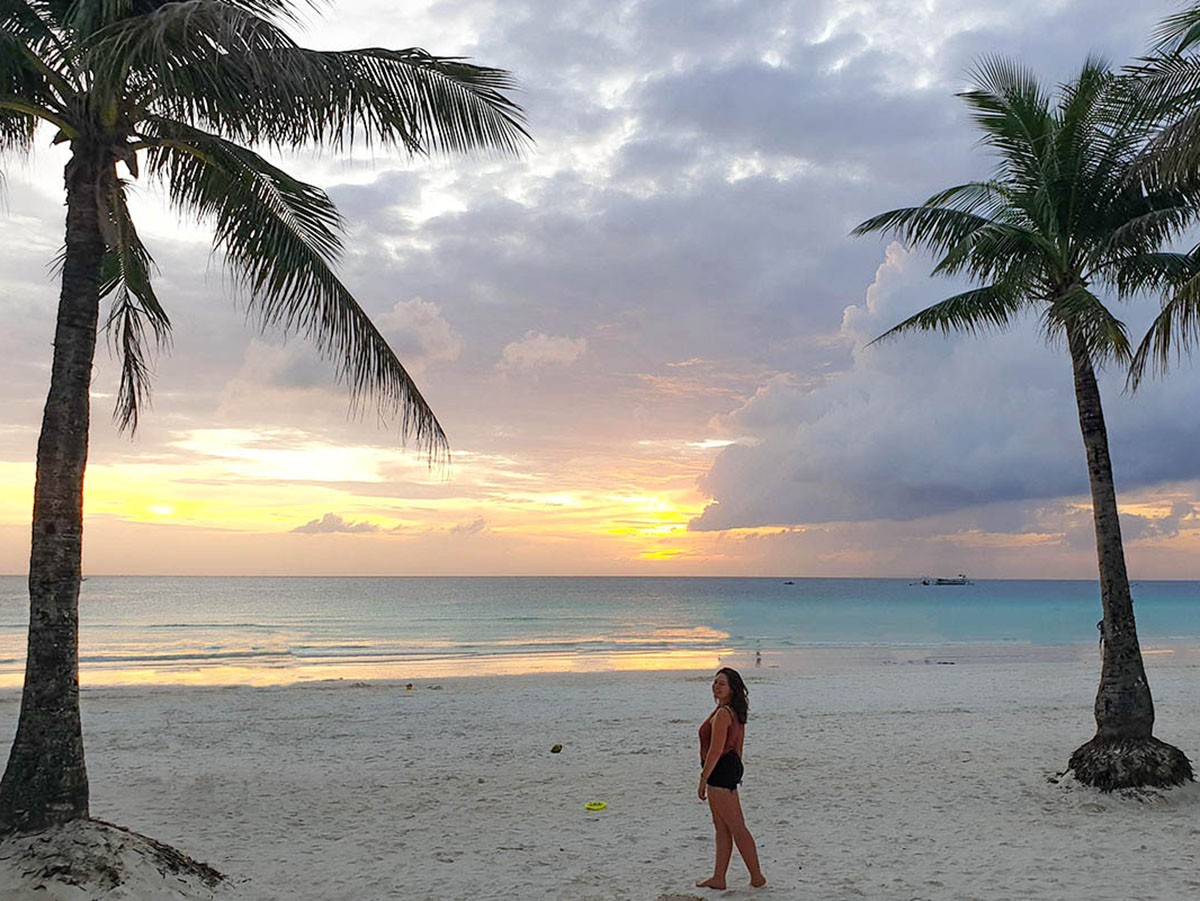
There isn’t a whole lot to do in Boracay, other than enjoy the resorts, have some beach time, and do some watersports, although I would highly recommend a massage at Mandala Spa (which seriously cured a red horse and Filipino rum hangover I was struggling with!) and a sunset cruise.
Where to Stay in Boracay
Discovery Shores is a beachfront 5* property, with gorgeous rooms with luxury features, one of the comfiest beds I’ve ever slept in and a complimentary in-room foot massages.
The beachfront bar is great for sunset, and there’s also a rooftop 360 bar with a plunge pool. The poolside rooms are luxurious, but the executive suites are something else – many with their own plunge pool and other amazing luxury features. Click here for more information and to book.
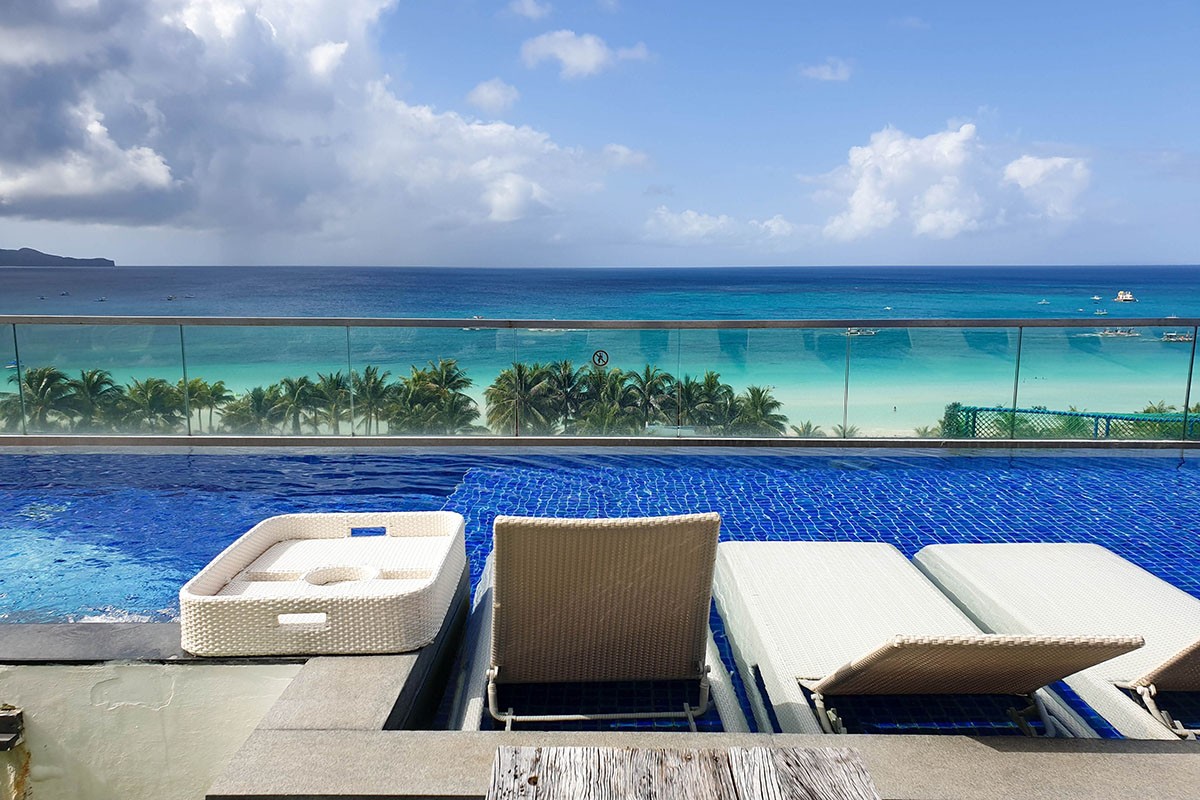
Panay Itinerary: Caticlan
Back on the mainland, Caticlan is where the airport for Boracay is based and where you will fly into. You’ll need to come back here after your stint in Boracay, and following this Panay itinerary, you’ll head eastwards. There are, however, a few interesting stops along the way…
From Caticlan wharf, you can take a tricycle to the Motag Living Heritage Museum.
Motag Living Heritage Museum

This museum focuses on rural Pinoy life, with exhibits about weaving, the house, and rice planting. It’s an interactive museum, with guests able to have the chance to get involved in some of the activities. We were actually joined by a CNN film crew and Miss Philippines – we were the backing actors…
However, we were told normally you don’t end up on TV at the Motag Living Heritage Museum. Most guests just enjoy the rural surroundings and learn a little more about local life.
Then, take a van bound to Kalibo Terminal. It will cost around 90 pesos per person and take around 2 hours.
Where to Stay in Kalibo
We didn’t stay in Kalibo, but Royal Suites Condotel is a 3* property with great reviews. It is clean and well serviced, with an onsite fitness centre and included breakfast with room rates. Click here for more information.
From Kalibo town, you can take a 15-minute tricycle ride to the Mangrove Forest for P40/special ride.
Pina Weaving
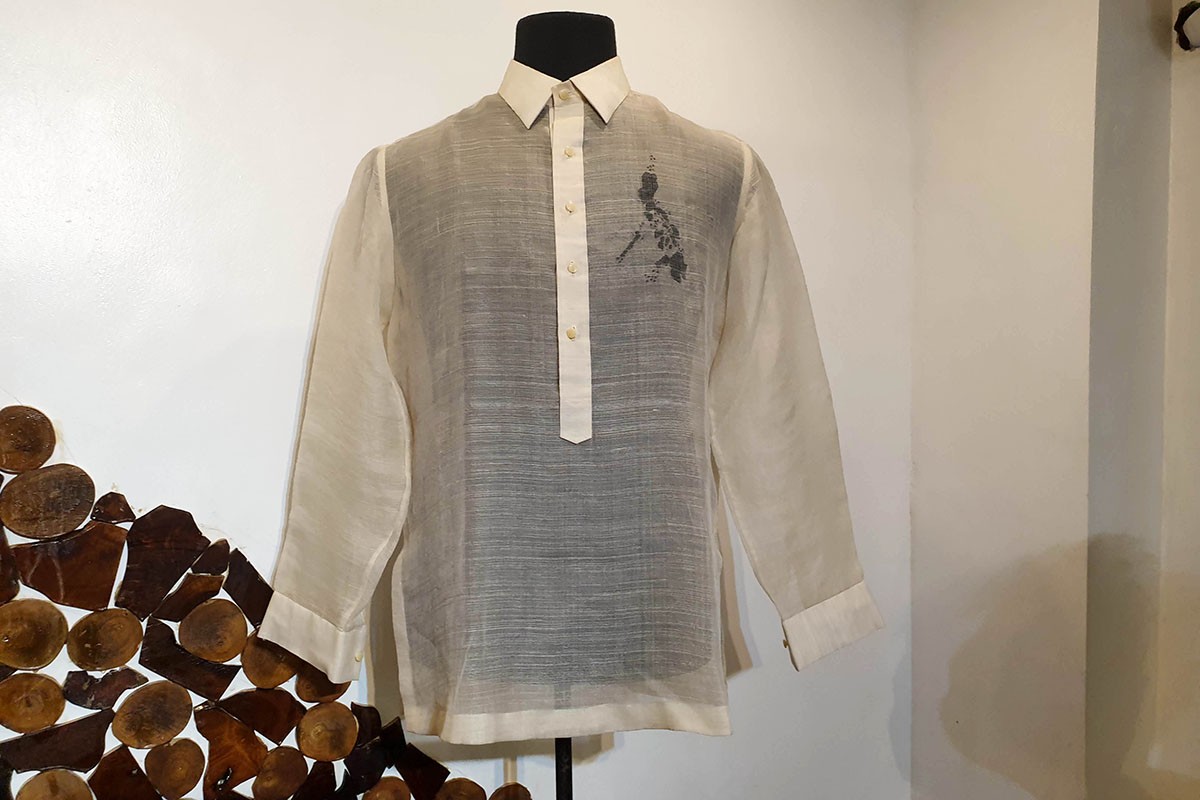
Venturing further west, there’s the Pina Weaving workshop. Here, you’ll get the chance to learn all about how a man makes clothes by pineapple fibers. It’s a really unique craft, and you’ll get to go on a guided tour around the workshop.
Mangrove Eco Retreat
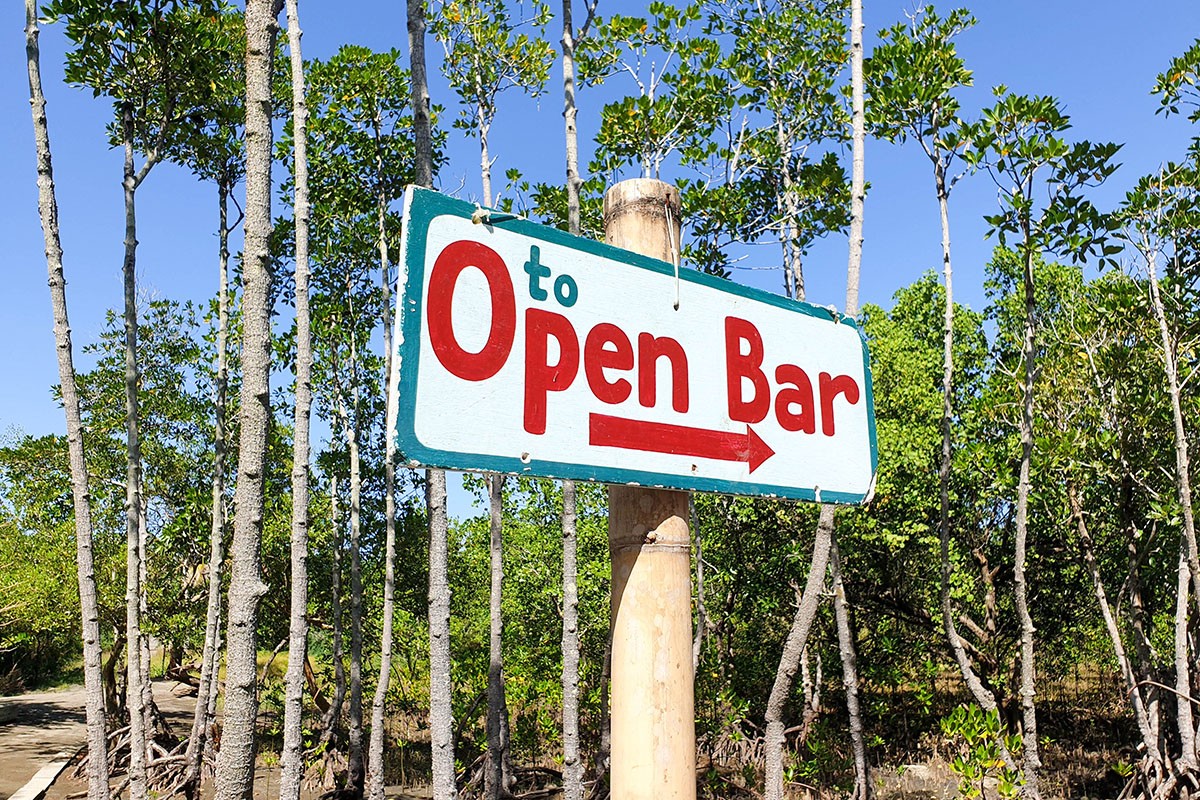
The mangroves are a lovely nature spot to visit in Panay, with elevated walkways going through the dense bushes. They finish at the sea, where there is a sign to both a free bar and Jolibee’s (if you’ve been to the Philippines, you’ll know all about this place, if you haven’t, I won’t spoil the surprise). We did manage to get a Red Horse (ridiculously strong Filipino beer) here, and there’s also the opportunity to try the local specialty of tamaloc, a woodworm. I stuck to the Red Horse!
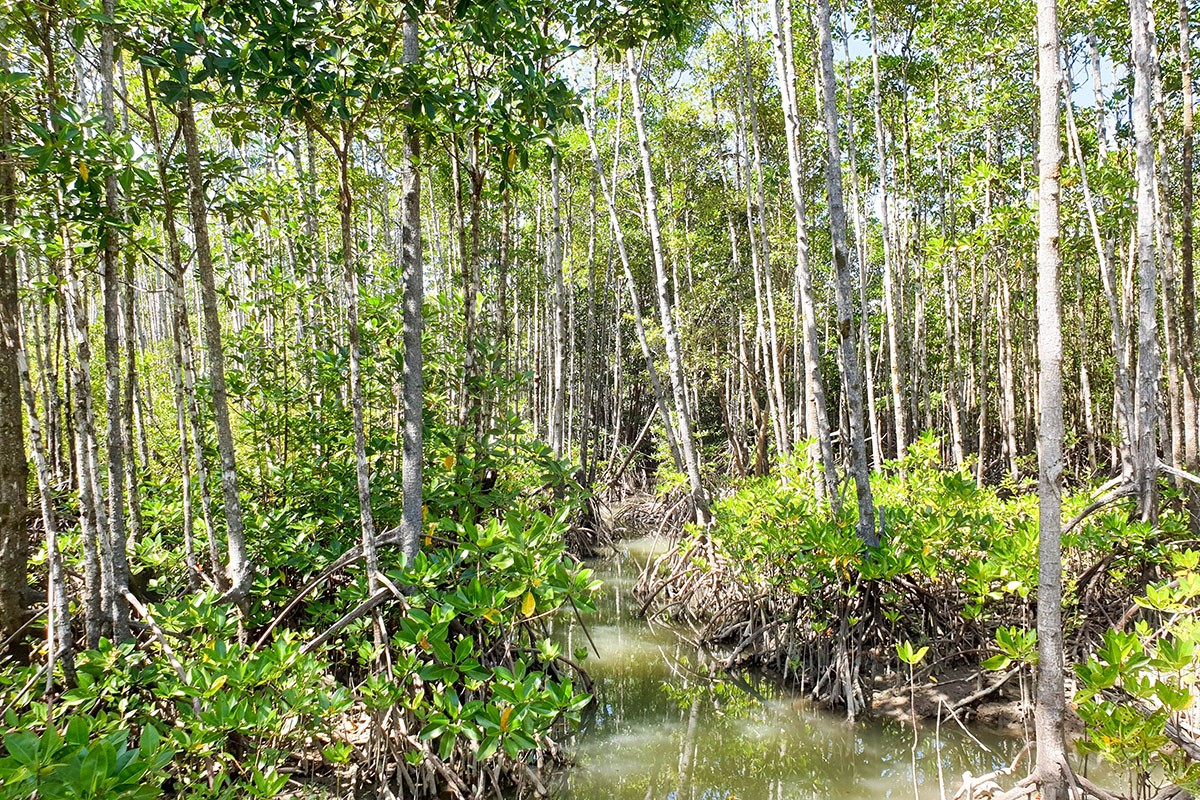
To get from Kalibo to Roxas, take a passenger van, taking 2 hours, for 100 pesos per person.
Driving onwards across Panay Island’s North Coast, your next stop on this itinerary is Roxas. This is famed for being the birthplace of Roxas, the ex-president of the Philippines, and is the second-largest city in Panay Island.
However, compared to Metro Manila and Cebu, Roxas is a chilled-out city with some interesting tourist attractions for history and culture fans.
Seafood Capital
After its fame for being the residence of its ex-president, Roxas also enjoys a reputation as the seafood capital of the Philippines. They’re big on seafood here, so if you want to enjoy some seafood on your Panay itinerary, here’s the place. We ate at Siguin Fish Harvesting for dinner – if you’re veggie, they do some non-seafood options as well.
Church and Oldest Bell
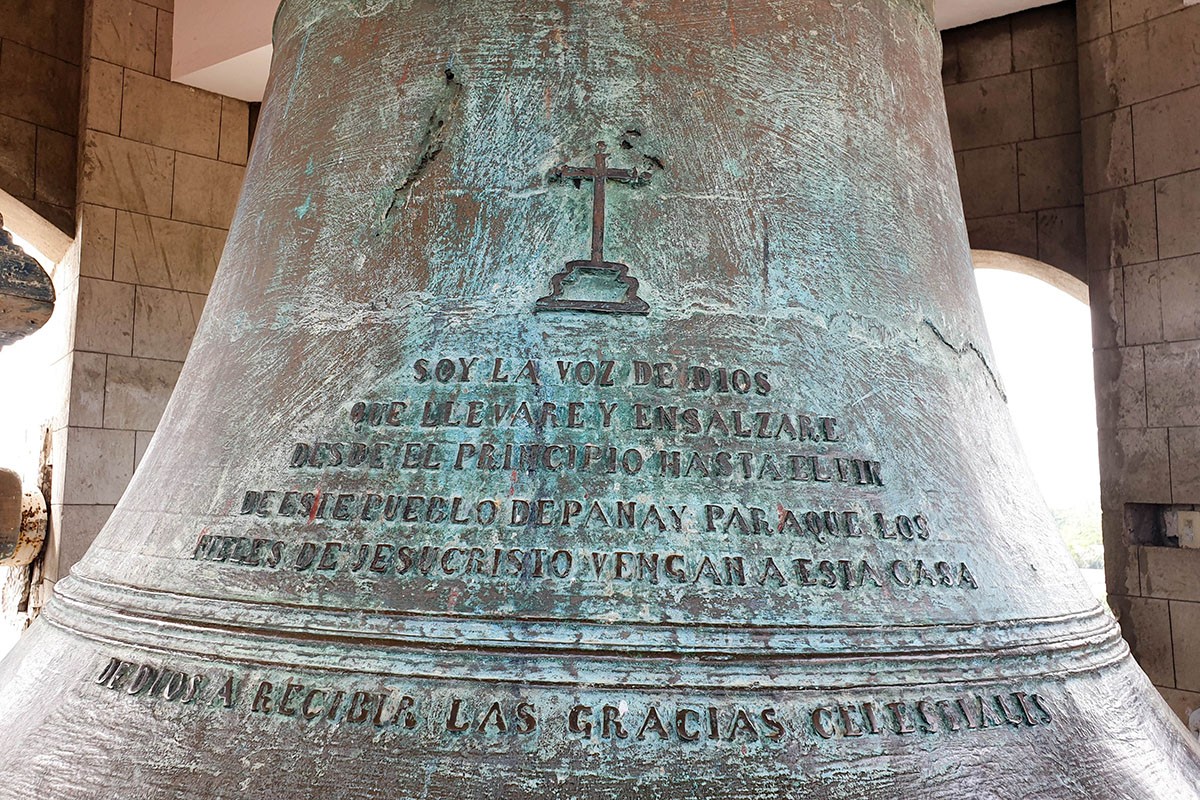
Roxas is home to a beautiful Catholic church and the oldest bell in South East Asia. You’ve got to climb up (how many?) steps to reach it, but it’s definitely worth checking out. You’ll even see some inscriptions in Spanish on the bell itself, a clear note of the Philippines’ past!
Clam Shell Jewellery
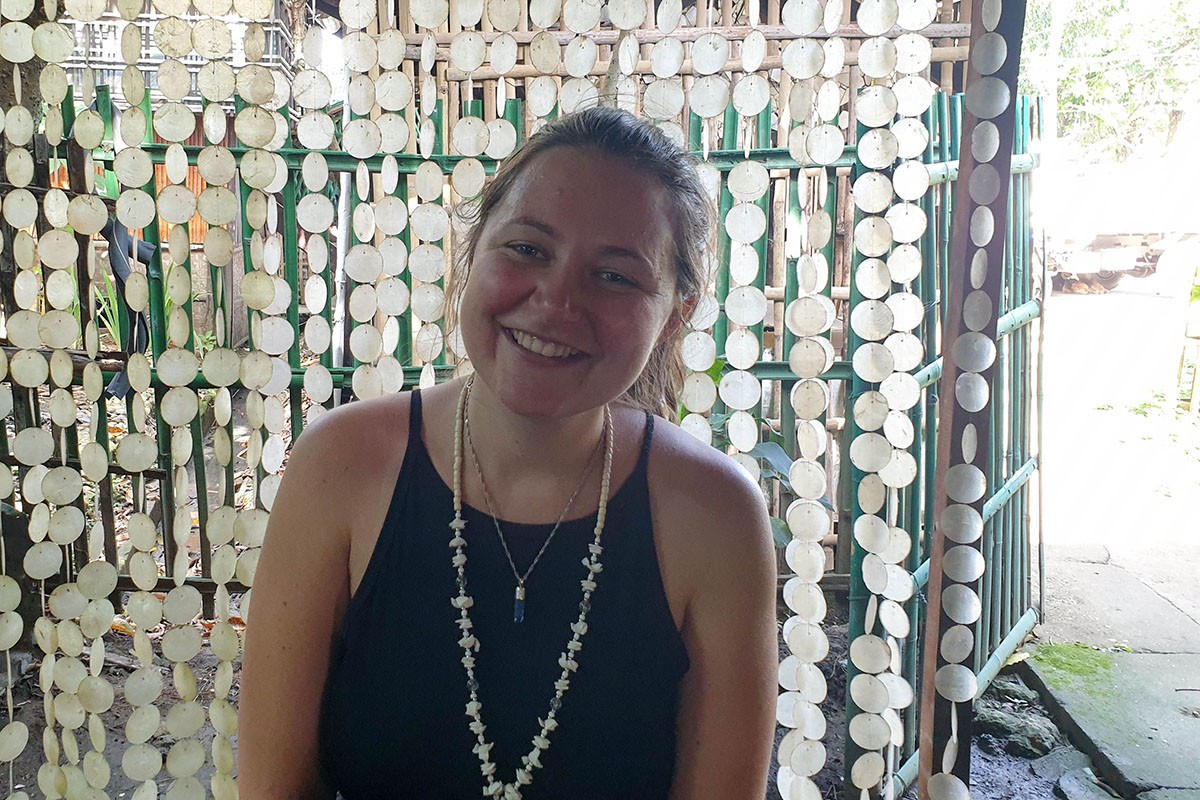
Roxas isn’t only famous for seafood and its ex-president – it’s also known as the prime clam shell jewellery maker in the country. It’s actually a lot cooler than it sounds – and you can go to the workshop and learn how it’s made yourself.
Roxas Museum
Roxas Museum is a small establishment but has a lot of information about the city during different periods. It talks about the native people of the region, as well as local wine and marine creatures in the area. The museum has exhibits from the Spanish period, the American period and a little from the Japanese period, as well as a meaningful exhibit on Philippine independence and the president, Roxas, links to the city.
Dried Fish Market
Hold your nose when you go here… something smells a bit fishy. Even if you are the biggest fish fan, I’m not so sure if you’ll find this appetizing. However, it’s a local market, and it’s interesting to walk around. There’s a guy who makes and sells waffles for 10 pesos a pop as well!
Raft Lunch Cruise
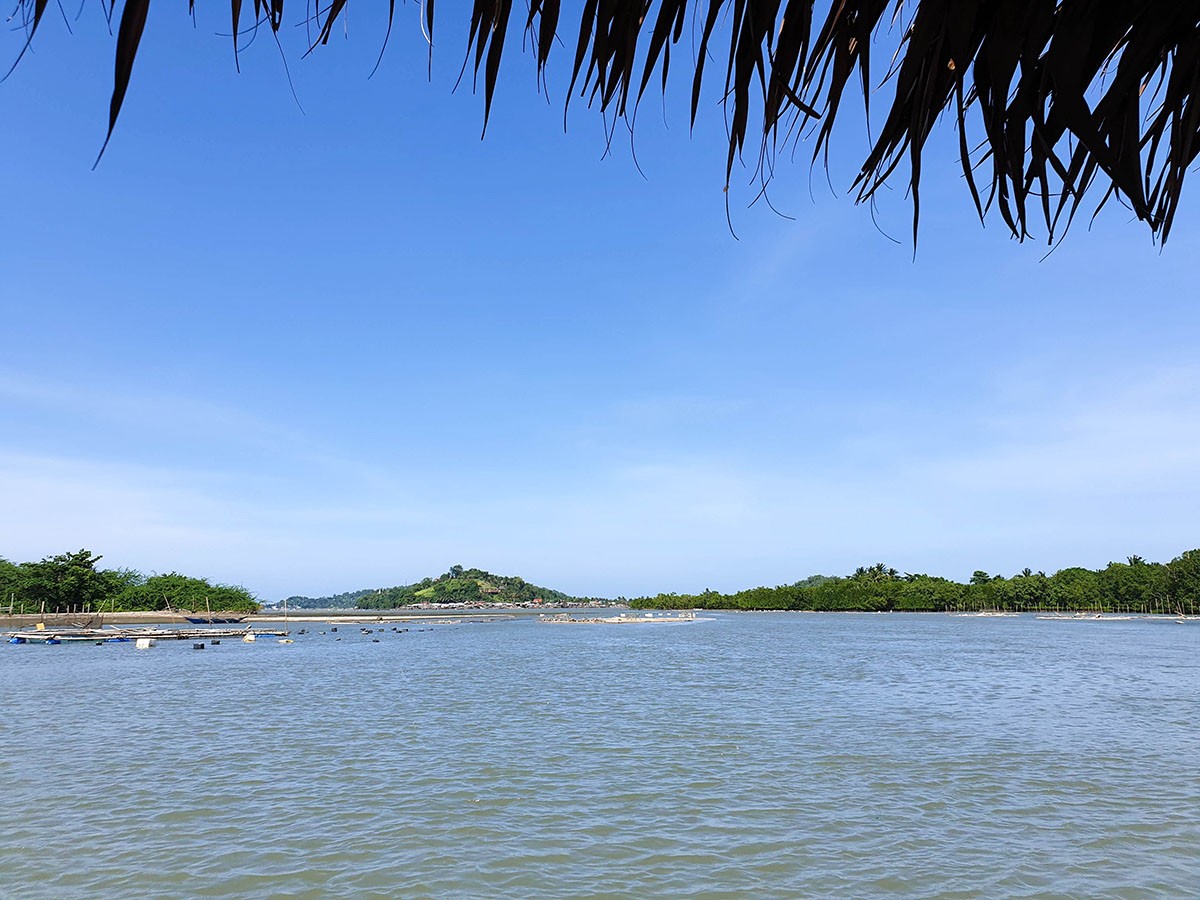
After a tour of Roxas, you can take a lunch cruise around the shore and to a couple of sandbars. There’s food on the boat, as well as entertainment, massages and a guide pointing out the flora and fauna of the area. After the cruise, you’re graced with a traditional Filipino performance.
Where to Stay in Roxas
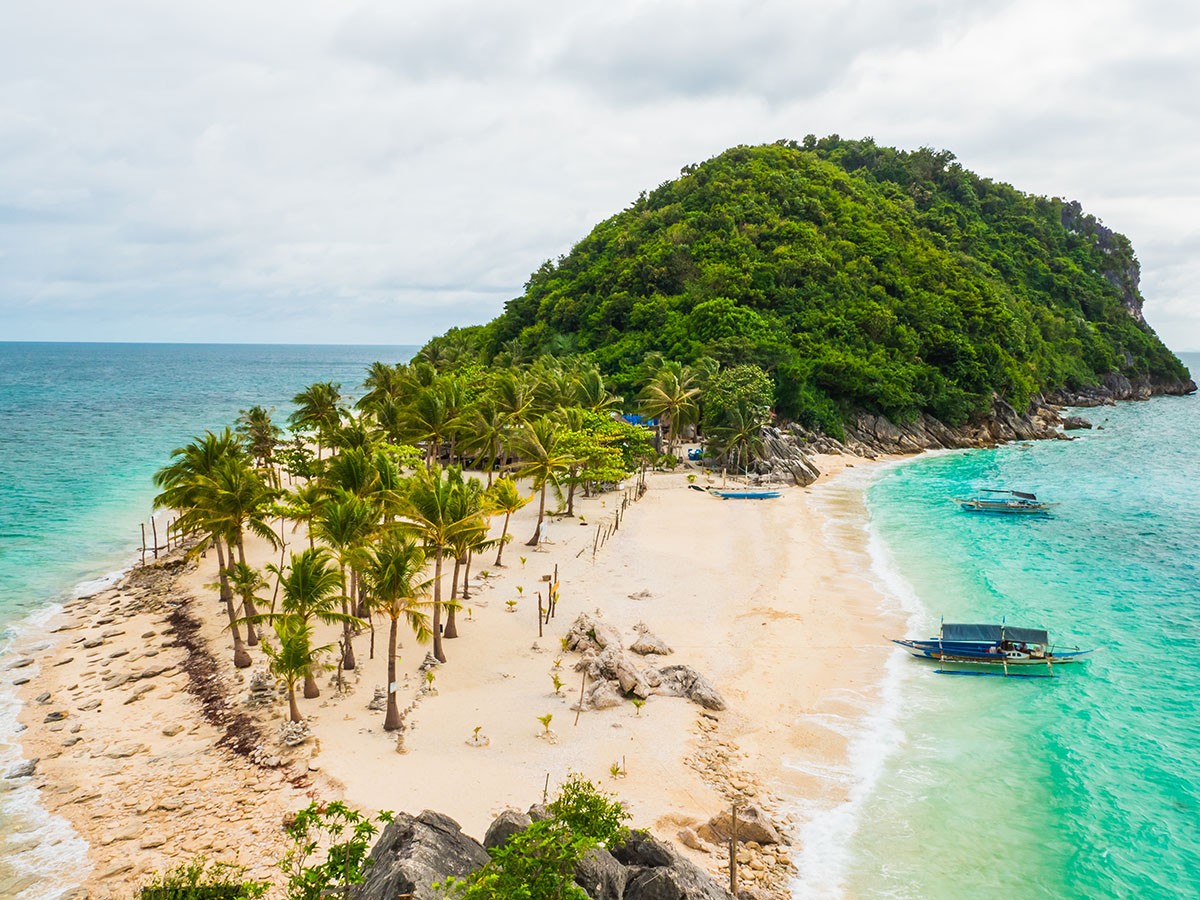
We, unfortunately, didn’t get the chance to see the Islas Gigantes, due to bad weather on the day we were supposed to do the boat trip (sod’s law eh, it was, of course, beautiful weather every other day…).
However, I’ve heard they are really beautiful, and I think they’re definitely worth a stop on your Panay Itinerary.
Where to Stay near Islas Gigantes
Your panay island itinerary.
I hope that this Panay Island itinerary has helped you to see some of the best things to do on Panay Island, and some great culture spots very near Boracay! Check out my guide to planning a trip to the Philippines to learn more about holidaying to this beautiful country!
If you’ve enjoyed this post, please share it or follow me on Instagram or YouTube !
- New Zealand
- The Philippines
- The Netherlands
- United Kingdom
- Inspiration
- Overland Itineraries
- Packing Lists
- Travel Tips
- Working Abroad
- Accomodation Guides
- Overland Travel
- Preserving Cultures
- Protecting Animals
- Living Abroad
Username or Email Address
Remember Me
Peoples Hotel: Luxury Accommodations at Affordable Rates
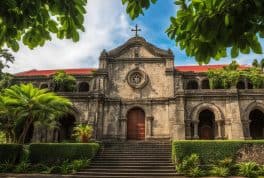
Explore Sta. Monica Church (Capiz), Panay Philippines
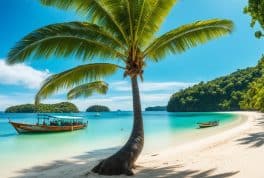
Guimaras Island Private Day Tour from Iloilo
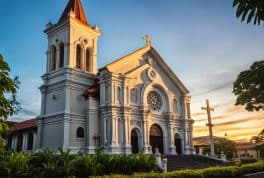
Our Lady of the Most Holy Rosary Church, Panay
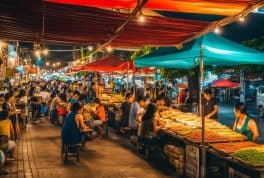
Iloilo City Food Tour
Panay island.
Panay Island, in the Western Visayas of the Philippines, is a vibrant mix of stunning beaches, including Boracay, rich cultural festivals like Ati-Atihan, and diverse landscapes. Known as the "Seafood Capital of the Philippines," it offers a unique blend of indigenous, Malay, and Spanish influences, making it an ideal destination for those seeking natural beauty and cultural richness.

Goldberry Lite Iloilo: Experience Affordable Luxury in Iloilo City
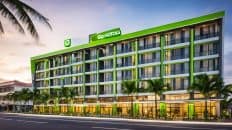
Go Hotels Iloilo: Budget Accommodations in Iloilo City
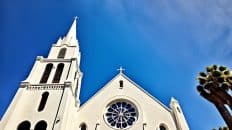
Visit Santa Monica Parish Church, Panay Philippines
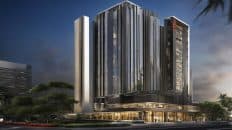
Zuri Hotel: Your Luxury Boutique Hotel Experience
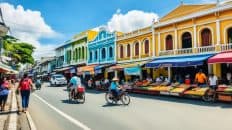
Iloilo City Heritage Tour
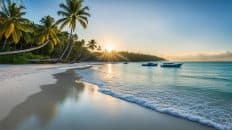
Explore Antonia Beach, Panay Philippines Oasis
Top 10 things to see in panay.
- Boracay Island (Aklan Province) : Known for its powdery white sand beaches, crystal-clear waters, and vibrant nightlife, Boracay is a must-visit destination for beach lovers. It offers various water sports activities, stunning sunsets, and a lively atmosphere.
- Iloilo City : This city is a blend of history and modern culture, famous for its Spanish colonial churches, old houses, and the Iloilo River Esplanade. The city is also known for its vibrant Dinagyang Festival.
- Miag-ao Church (Iloilo Province) : A UNESCO World Heritage Site, this stunning example of Baroque architecture is renowned for its intricate facade and historical significance.
- Roxas City (Capiz Province) : Dubbed as the "Seafood Capital of the Philippines," Roxas City offers fresh and delicious seafood. It’s also home to Baybay Beach, a perfect spot for enjoying local cuisine and a beautiful sunset.
- The Ruins of Muscovado Sugar Mills in Antique : These historical ruins are a testament to the island’s rich history in sugar production during the colonial era.
- Gigantes Islands (Iloilo Province) : This remote group of islands is famous for its pristine beaches, clear waters, and natural beauty, offering a more secluded and peaceful beach experience.
- Ati-Atihan Festival (Kalibo, Aklan) : Witness one of the Philippines' most colorful and vibrant festivals, with street dancing, parades, and cultural performances celebrating the Ati tribe’s history.
- Northwest Panay Peninsula Natural Park : Ideal for nature lovers, this protected area offers lush forests, diverse wildlife, and unique ecological features, providing great opportunities for hiking and wildlife watching.
- Sicogon Island (Iloilo Province) : A rising star in tourism, this island offers unspoiled natural beauty with its clear waters, sandy beaches, and a laid-back vibe, making it perfect for relaxation and escape from the crowds.
- The Heritage Sites of Iloilo : Explore the rich history of Iloilo by visiting its well-preserved heritage sites, including old mansions, churches, and historical buildings that showcase the architectural and cultural heritage of the region.
Guides and Tours
Cities on panay.
- Iloilo City
- San Jose de Buenavista
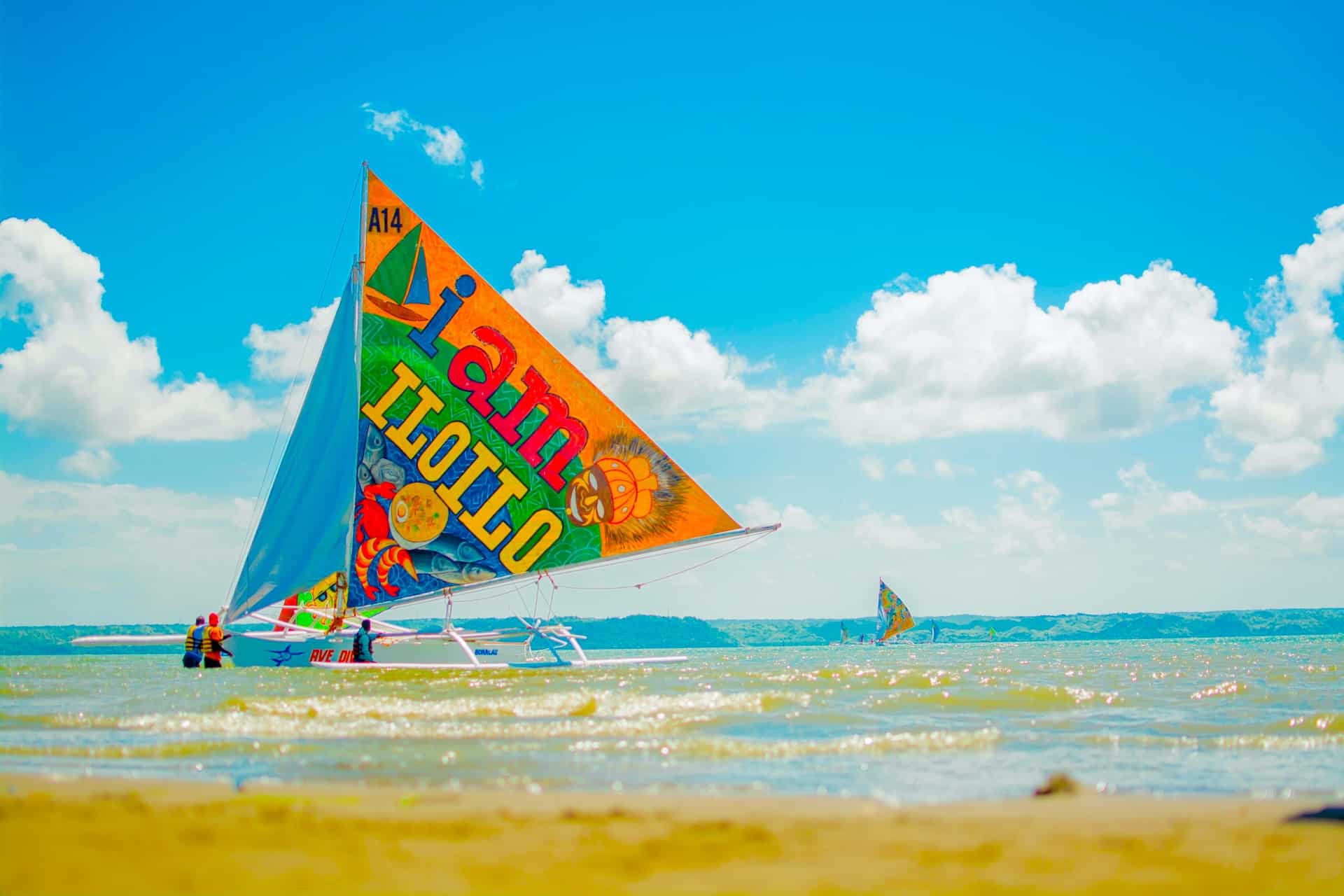
Top 10 Questions and Answers about Panay
1. what is panay island and where is it located.
Answer: Panay Island is one of the islands in the Visayas group in the central part of the Philippines. It is situated southeast of the larger island of Luzon and northwest of the smaller island of Negros.
2. What are the major cities and provinces on Panay Island?
Answer: Panay Island is divided into four provinces: Aklan, Antique, Capiz, and Iloilo. Major cities include Iloilo City, which is the largest city on the island, Roxas City in Capiz, and Kalibo in Aklan.
3. What is the significance of Panay in Philippine history?
Answer: Panay has a rich history, including being one of the earliest islands in the Philippines to have been colonized by the Spaniards. The island is also known for the historic event known as the barter of Panay, which is a legendary trade agreement between the indigenous Ati people and Malay settlers.
4. What are some popular tourist attractions in Panay?
Answer: Popular attractions include the white sandy beaches of Boracay in Aklan, the historic churches like Panay Church, the beautiful Iloilo River Esplanade in Iloilo City, and natural attractions such as the Northwest Panay Peninsula Natural Park.
5. What festivals are celebrated in Panay?
Answer: Panay is famous for its vibrant festivals, most notably the Ati-Atihan Festival in Aklan and the Dinagyang Festival in Iloilo. These festivals feature colorful parades, street dancing, and reflect the rich culture and history of the island.
6. What languages are spoken in Panay?
Answer: The primary languages spoken in Panay are Hiligaynon (Ilonggo) and Kinaray-a, with Filipino and English widely used as secondary languages.
7. What are the main industries in Panay?
Answer: The main industries in Panay include agriculture, fishing, and tourism. The island is also known for traditional crafts like the weaving of piña cloth.
8. What is the role of Panay in the Philippines’ economy?
Answer: Panay plays a significant role in the Philippines' economy, especially through its agricultural produce, fisheries, and as a growing tourism destination. Its development in sectors like technology and infrastructure also contributes to the national economy.
9. What is the transportation system like in Panay?
Answer: Panay has a well-developed transportation system, including roads, ports, and airports. The island is connected internally by buses, jeepneys, and tricycles, and externally by several ports and airports, including the Iloilo International Airport.
10. What environmental challenges does Panay face?
Answer: Panay faces several environmental challenges, such as deforestation, pollution, and the impacts of climate change. Conservation efforts are ongoing to protect its diverse ecosystems and to promote sustainable development practices.
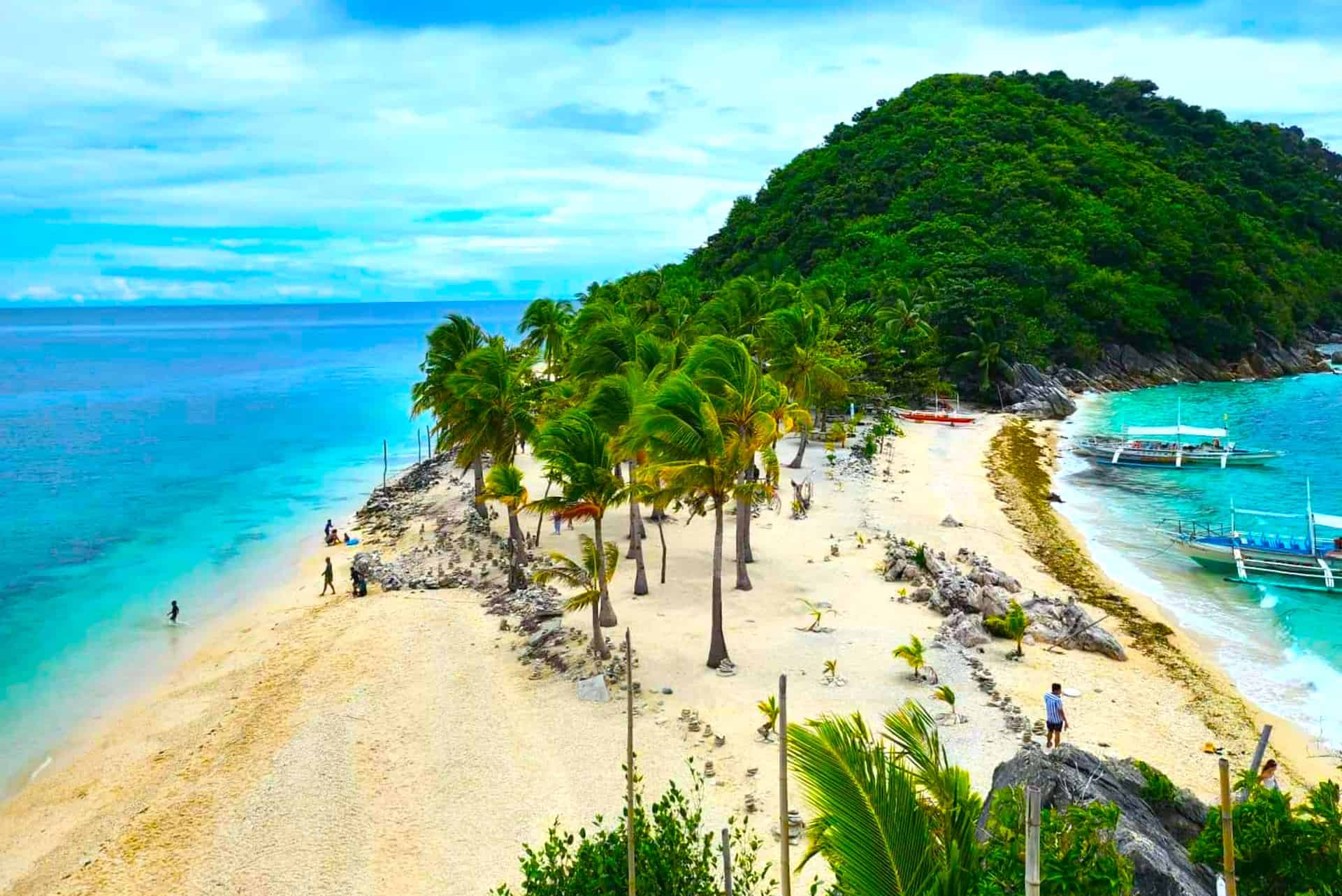
Why you should visit Panay
Panay island: a hidden gem in the heart of the philippines, introduction to panay's enchantment.
Nestled in the central part of the Philippine archipelago, Panay Island emerges as a destination of unparalleled charm and diversity. This comprehensive review aims to illuminate why Panay should be a top choice for travelers seeking an immersive experience in culture, nature, and adventure.
Cultural Richness: A Journey Through Time
Panay Island is not just a place but a living museum of Philippine history and culture. The island's story is woven through centuries, beginning with the legendary barter of Panay, a foundational event that marks the exchange between the indigenous Ati people and the Malay settlers. This cultural tapestry is further adorned by the influences of Spanish colonialism, visible in the architecture of centuries-old churches and heritage sites.
One cannot talk about Panay without mentioning its vibrant festivals. The Ati-Atihan Festival in Kalibo and the Dinagyang Festival in Iloilo are spectacles of color, dance, and music, celebrating the island's rich history and diverse influences. These festivals are not just tourist attractions but a deep dive into the soul of Panay, offering a glimpse into the island's spirit and its people's resilience and joy.
The Natural Splendor of Panay
Panay is a paradise for nature lovers. The island is blessed with an array of natural landscapes, from the pristine white beaches of Boracay to the unspoiled mountains and forests of Antique. The Northwest Panay Peninsula Natural Park is a haven for biodiversity, home to rare species and lush vegetation. The park offers a serene escape from the bustle of urban life, with opportunities for trekking, bird watching, and connecting with nature.
The beaches of Panay, particularly Boracay, need no introduction. Known globally for their powdery white sands and crystal-clear waters, these beaches offer a slice of paradise on earth. Whether it’s the vibrant energy of Boracay or the tranquil shores of less-visited islands like Sicogon, Panay's beaches cater to all preferences.
The Gastronomic Delights of Panay
Panay's culinary landscape is as diverse as its culture. The island is a gastronomic haven, offering a blend of indigenous, Malay, Spanish, and Chinese influences. Seafood lovers will find themselves in heaven in Roxas City, the seafood capital of the Philippines, where fresh and sumptuous seafood is a daily indulgence. Iloilo City, with its famous La Paz Batchoy and Pancit Molo, offers a taste of local flavors that will delight any palate.
Moreover, the island's traditional markets and street food stalls provide an authentic culinary experience, allowing travelers to savor the local cuisine and connect with the community.
The People: Heart and Soul of Panay
The true essence of Panay lies in its people. Known for their warmth and hospitality, the locals of Panay make every visit memorable. Engaging with the community, whether through casual conversations at a local café or during the festive celebrations, visitors will feel a genuine sense of welcome and belonging.
The resilience and creativity of the people of Panay are remarkable. From artisans preserving traditional crafts like the weaving of piña cloth to the fishermen and farmers upholding their way of life, the locals are the heart and soul of the island, inviting visitors to share in their stories and traditions.
Adventure and Leisure: A Diverse Offering
Panay offers a range of activities for the adventurous soul. From island hopping and water sports in Boracay to hiking and exploring the less-trodden paths in the inland regions, there’s something for every type of adventurer. For those seeking relaxation, the island’s numerous spas, resorts, and tranquil beaches provide the perfect setting for unwinding and rejuvenation.
Cultural tours, heritage walks, and visits to historical landmarks like the Miag-ao Church offer a more laid-back but equally enriching experience for those interested in the cultural and historical aspects of the island.
Accessibility and Accommodation
Panay is easily accessible, with international and domestic flights to Iloilo and Kalibo, and well-connected road and ferry networks making travel within the island convenient. Accommodation options range from luxury resorts to budget-friendly homestays, catering to all preferences and budgets. The island’s infrastructure, while continually developing, provides a comfortable and safe experience for travelers.
Conclusion: Why Panay is a Must-Visit
In conclusion, Panay Island is a destination that offers a rich tapestry of experiences. It is a place where history, culture, nature, and modernity coalesce to create a travel experience that is both diverse and authentic. Whether it's the allure of its festivals, the tranquility of its natural landscapes, the warmth of its people, or the adventure and leisure activities, Panay promises something special for every visitor.
A trip to Panay is more than just a holiday; it is an opportunity to immerse oneself in a vibrant and enduring culture, to connect with nature, to savor delightful culinary experiences, and to create memories that last a lifetime. Panay is not just a destination; it is an experience, a journey into the heart of the Philippines.
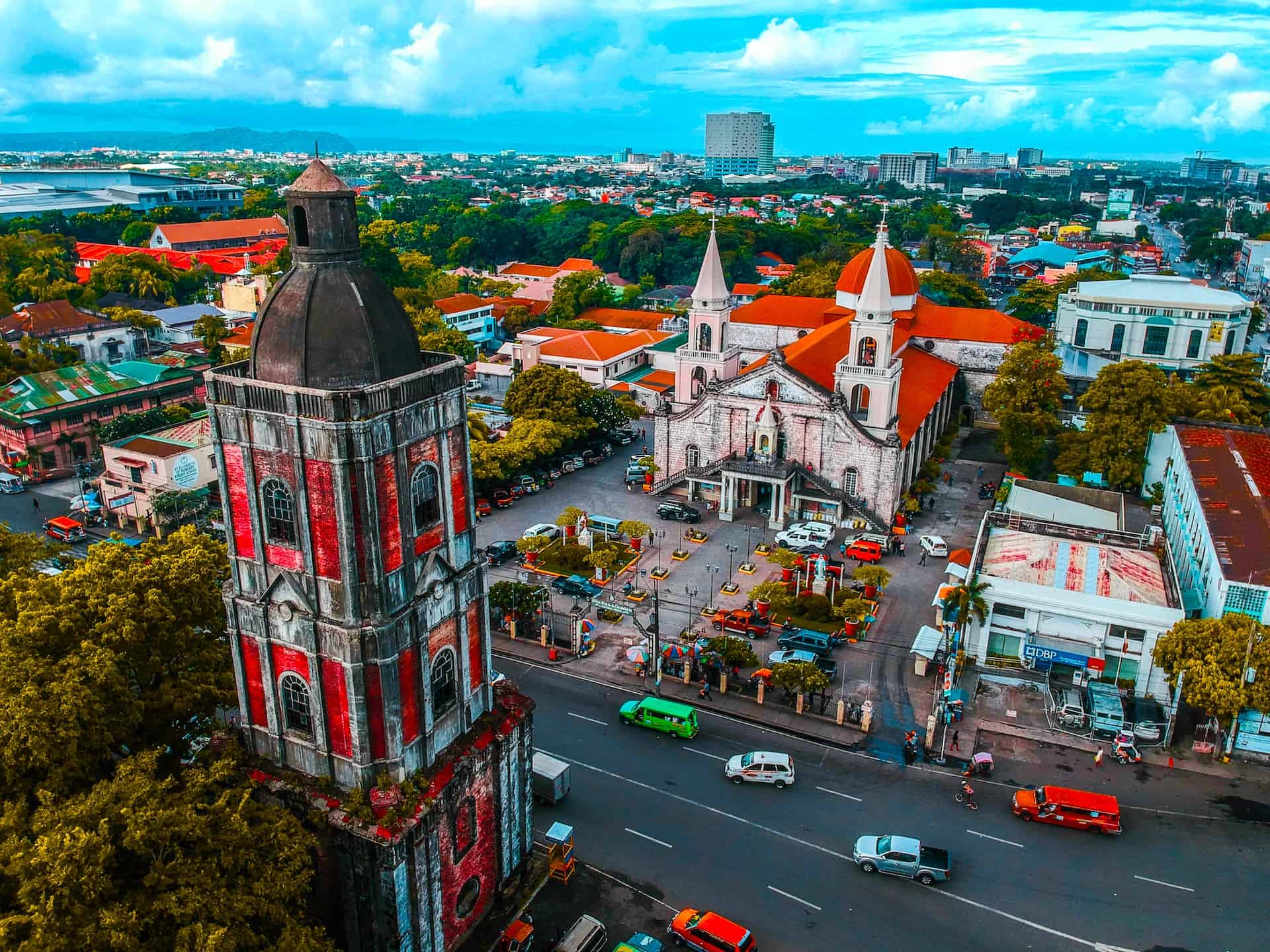
Panay Facts
1: geography and nature of panay.
Panay Island, nestled in the heart of the Philippine archipelago, is a geographical marvel that embodies the lush, vibrant essence of the Western Visayas region. As the sixth-largest island in the Philippines, Panay serves as a testament to the country’s diverse and rich natural heritage. This section delves into the intricate tapestry of landscapes, seas, and ecological wonders that make Panay a microcosm of the Philippines' natural beauty.
1.1 The Geographical Tapestry of Panay Island
Panay Island, located southeast of the main cluster of Philippine islands, is surrounded by the Sulu Sea to the southwest and west and the Sibuyan Sea to the northeast located southeast, marking it as a significant geographical entity. The island is divided into four provinces: Iloilo, Aklan, Capiz, and Antique, each contributing its unique character to the island's overall identity. The island’s landscape is a harmonious blend of rolling hills, verdant plains, and a network of rivers that enrich its fertile land.
The Guimaras Strait, lying between mainland Panay and the smaller island province of Guimaras, is not just a vital waterway but also a scenic marvel, offering breathtaking views of the sunset over the Panay Gulf. The strait has been a witness to the island’s vibrant history and is a crucial conduit for trade and travel within the region. To the southwest, north and the north, the smaller islands dotting the seascape add to the picturesque quality of Northern- uss Panay itself, serving as idyllic retreats and rich fishing grounds.
1.2 The Natural Splendor of Rivers and Seas
Panay’s natural beauty is further accentuated by its many rivers, which are not only vital sources of freshwater but also integral to the island’s ecosystem and local livelihoods. These rivers, meandering through the provinces, have been the lifelines for communities for centuries, supporting agriculture and fishing. The rivers of Panay, with their rich biodiversity, are a testament to the island's commitment to preserving its natural heritage.
The seas surrounding Panay Island, namely the Sulu and Sibuyan Seas, are as integral to its identity as its land. These seas are abundant with marine life, making them popular among local fishermen and international researchers alike. The waters are also vital routes for boats connecting Panay with other islands in the Visayas, such as Negros and Cebu, facilitating cultural and economic exchanges that have shaped the island's history.
1.3 Flora, Fauna, and Ecological Significance
Panay Island is not only a geographical wonder but also an ecological treasure trove. The island is home to a plethora of species, some endemic and others migratory, making it a biodiversity hotspot. One of the most notable species is the Panay monitor lizard, a symbol of the island’s unique wildlife. The lush forests and diverse habitats across the island provide sanctuary to a myriad of species, contributing to the Philippines' reputation as one of the world’s mega-diverse countries.
The Northwest Panay Peninsula Natural Park stands as a beacon of conservation efforts on the island. This park is a haven for wildlife and a crucial area for environmental research and education. The park's existence underscores Panay's commitment to balancing ecological preservation with human development, a challenge faced by many regions in the Philippines.

1.4 Rivers as the Lifeline of Panay
The rivers of Panay are more than just bodies of water; they are the arteries that sustain life across the island. From the provision of irrigation for agriculture to being sources of freshwater, these rivers play a critical role in the everyday life of Panay’s inhabitants. The rivers also hold cultural significance, having been the sites of ancient settlements and modern-day festivals.
1.5 Challenges and Conservation Efforts
Despite its natural beauty and ecological importance, Panay Island faces challenges common to many parts of the Philippines. Environmental concerns such as deforestation, pollution, and the impact of climate change pose significant threats to the island's ecosystems. The delicate balance between development and conservation is a constant endeavor for the local governments and communities.
Conservation efforts on Panay are a collaborative endeavor, involving local communities, government agencies, and international organizations. Initiatives to protect the island's natural habitats and species, such as the Panay monitor lizard, are ongoing. These efforts are not only vital for the island's ecological health but also for preserving the rich natural heritage for future generations.
1.6 Panay: A Microcosm of Philippine Geography
Panay Island, with its diverse landscapes, rich waters, and vibrant ecosystems, is a microcosm of the Philippine islands' geographical diversity. The island's unique blend of natural features – from the Guimaras Strait to its many rivers, from the rolling hills of its interiors to the rich seas that envelop it – showcases the myriad facets of nature in the Philippines. Panay is not just an island; it is a vivid representation of the Philippine archipelago’s natural splendor and ecological significance.
In conclusion, Panay Island stands as a testament to the Philippines' rich geographical and natural heritage. From its strategic location in the Western Visayas region to its diverse ecosystems, Panay encapsulates the beauty and complexity of nature in the Philippines. As we explore further into this enchanting island, the intricate connections between its geography, culture, and history become increasingly apparent, painting a picture of an island that is as multifaceted as it is integral to the narrative of the Philippine islands.
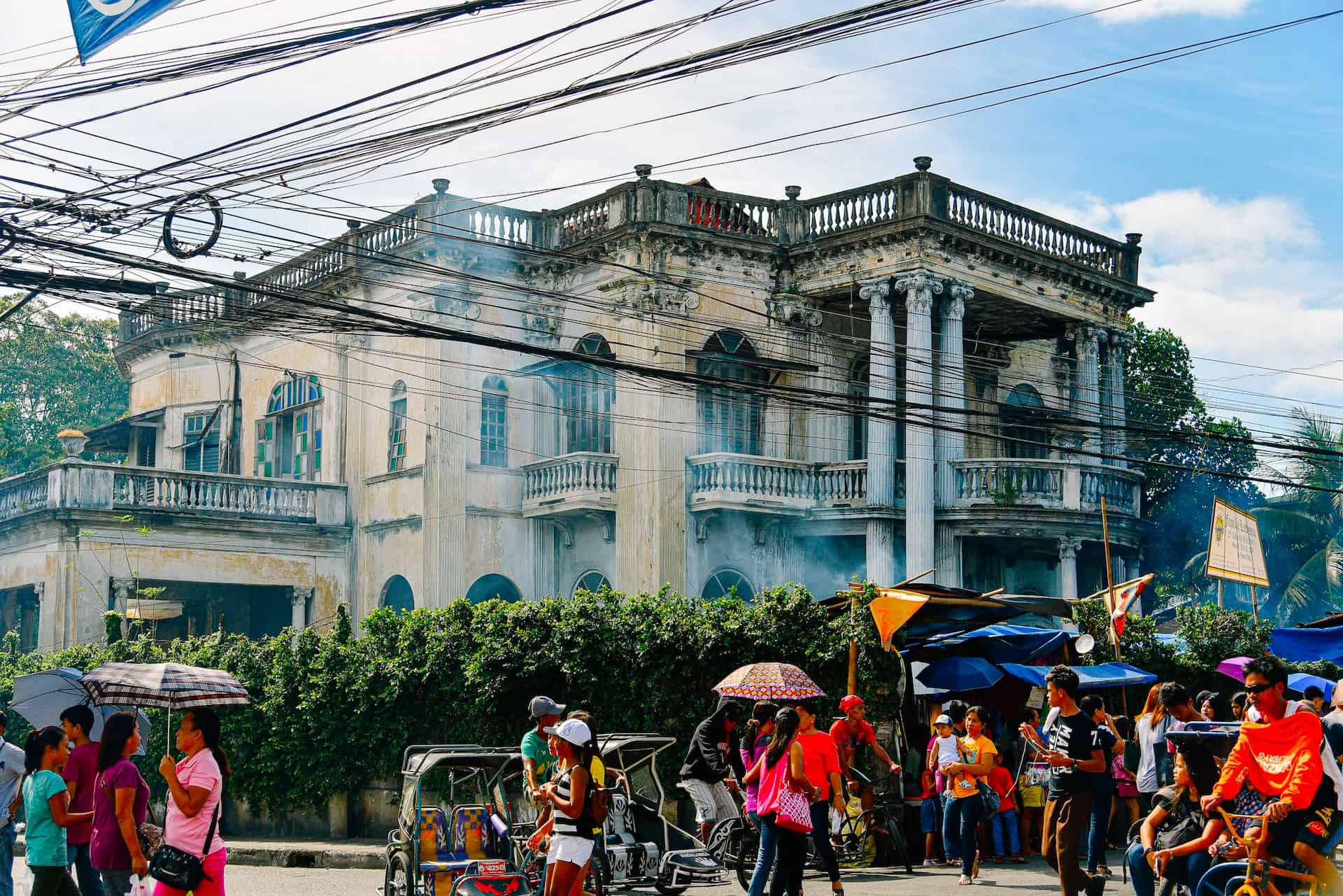
2: History and Culture of Panay
Panay Island, a significant part of the Philippine Islands, holds a history as diverse and intricate as its landscapes. The island's past, intertwined with the rich tapestry of Philippine history, tells a story of ancient settlements, colonial encounters, and enduring cultural traditions. This section explores the historical evolution of Panay, shedding light on the island's role in shaping the cultural and historical narrative of the Western Visayas region and the Philippines at large.
2.1 The Early Inhabitants and the Malay Legacy
The history of Panay is deeply rooted in the early Malay settlements. Legend speaks of the ten datus, leaders of Malay origin, who fled from the tyranny of Datu Makatunaw in Borneo and found refuge in the welcoming shores of Panay. This migration, a cornerstone of Panay's history, laid the foundations of the island's culture and society. The barter of Panay, a pivotal event where the ten datus had reportedly bought the island from the indigenous Ati people, is a story that has been passed down through generations, becoming an integral part of Panay's folklore.
The Malay influence profoundly shaped the cultural fabric of Panay, introducing aspects of their language, customs, and governance. This influence is still evident today, particularly in the traditions and practices of the Panay Bukidnon, an indigenous group known for their rich cultural heritage, including their intricate clothing and enduring customs.
2.2 The Spanish Era and the Birth of Panay's Colonial Legacy
The arrival of the Spaniards led by Miguel Lopez de Legazpi in the 16th century marked a new chapter in Panay's history. Panay became one of the first islands in the Philippines to experience Spanish colonization, with the establishment of the second Spanish settlement in the country. The Spaniards settled in various parts of the island, including what is now known as Iloilo City, transforming it into a key center for religion, culture, and education in the Visayas.
The Spanish influence on Panay is most famously epitomized in the grandeur of Panay Church, a historic church that stands as a testament to the island's colonial past. The church, with its majestic architecture and religious significance, has been a beacon of faith and resilience for the people of Panay for centuries.
2.3 The Resilience of Panay During World War II
The Panay incident during World War II is a significant event in the island's history. The bombing of the USS Panay by Japanese forces in 1937, while the gunboat was anchored in Chinese waters, escalated tensions leading up to the war. During the Japanese occupation of the Philippines, Panay became a focal point of resistance. The island's strategic location and the bravery of its inhabitants played a crucial role in the struggle for freedom and independence.
2.4 The Cultural Mosaic of Panay
Panay's history is not only a tale of conquests and conflicts but also a narrative of cultural integration and evolution. The island is a melting pot of indigenous traditions, Malay influences, Spanish colonial heritage, and modern Filipino culture. This cultural mosaic is evident in the island's festivals, cuisine, arts, and everyday life.
The festivals of Panay, such as the Ati-Atihan in Aklan and the Dinagyang in Iloilo, are vibrant celebrations that blend indigenous practices with religious motifs introduced during the Spanish era. These festivals, characterized by colorful costumes, rhythmic drumbeats, and lively street dancing, attract visitors from across the globe, showcasing the island's rich cultural heritage.
2.5 The Evolution of Panay's Urban Landscape
Over the centuries, Panay has evolved from a cluster of ancient settlements into a dynamic region with bustling cities and towns. Iloilo City, the largest city on the island, stands as a symbol of this transformation. Once a small fishing village, Iloilo City has grown into a major urban center in the Visayas, known for its historic buildings, vibrant economy, and rich cultural scene.
Other key cities on the island, and smaller islands such as Roxas City in Capiz and San Jose de Buenavista in Antique, have also played significant roles in Panay's development. These cities, each with their distinct character and history, contribute to the island's diversity and dynamism.
2.6 The Continuing Saga of Panay's History
The history of Panay is a saga that continues to unfold. The island has witnessed the ebb and flow of different cultures, the rise and fall of empires, and the relentless pursuit of its people for progress and identity. Today, Panay stands as a living museum of Philippine history, a place where the past and present converge to create a unique narrative.
As we delve deeper into the story of Panay, we uncover layers of history that reveal the resilience, adaptability, and richness of the island's culture. From ancient Malay settlers to Spanish colonizers, from wartime resilience to modern-day progress, Panay encapsulates the diverse and complex history of the Philippines. The island's story is not just a chapter in Philippine history; it is a testament to the enduring spirit of its people and their unyielding connection to their land and heritage.
In conclusion, the history and culture of Panay are as diverse and vibrant as the island itself. From its ancient Malay roots to its colonial past, from its wartime struggles to its cultural celebrations, Panay embodies the essence of Philippine history and culture. As we continue to explore the many facets of this remarkable island, we gain a deeper understanding of the forces that have shaped not only Panay but the entire Philippine archipelago. Panay is not just an island; it is a living narrative of history, resilience, and cultural richness.
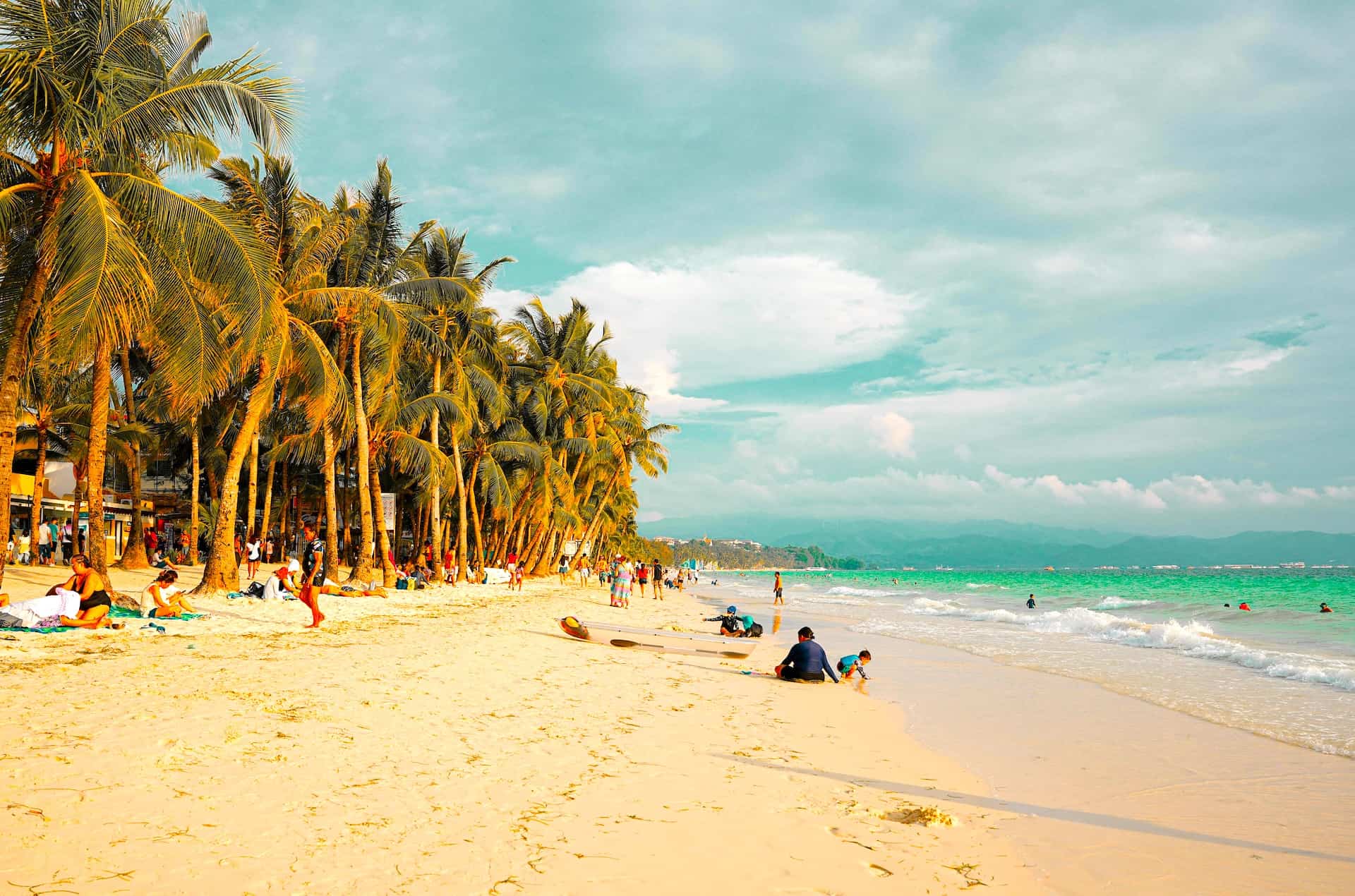
3: Cities and Provinces of Panay
Panay Island, a gem in the Philippine archipelago, is a land of contrasts and diversity. This section delves into the heart of Panay, exploring its cities and provinces, each with its unique character and contribution to the island's identity. From bustling urban centers to serene rural landscapes, Panay encapsulates the varied facets of life in the Western Visayas region.
3.1 Iloilo: The Cultural Heart of Panay
Iloilo Province, occupying the southeastern and western part of of Panay, is a tapestry of history, culture, and modernity. Iloilo City, the capital and largest city on Panay Island, is a hub of economic and cultural activity. Known as the "City of Love" in the Philippines, it is renowned for its heritage buildings, vibrant festivals, and exquisite cuisine. Iloilo City's rich history is reflected in its colonial-era churches, old houses, and the famous Iloilo River Esplanade, a testament to the city's blend of history and contemporary development.
Beyond the city, Iloilo Province is dotted with quaint towns and scenic countryside. The island province is a patchwork of rice fields, sugar plantations, and fishing villages, showcasing rural life in Panay. The town of San Joaquin, with its historic church and quiet beaches, exemplifies the island province's charm.
3.2 Aklan: The Gateway to Boracay
Northwest of Panay lies Aklan Province, known primarily as the gateway to the world-famous Boracay Island. Kalibo, the capital town of Aklan, is not just an entry point to Boracay but a destination in its own right. It is famous for the Ati-Atihan Festival, a vibrant celebration that attracts tourists from all over the country and the world. The festival, with its colorful parades and indigenous music, is a significant cultural event on Panay Island, showcasing the island's rich heritage.
Aklan is also home to other towns like Malay, which provides access to Boracay, and Altavas, known for its historic sites and serene landscapes. The province's craft industry, particularly famous legend its piña cloth weaving, is another highlight, adding to Panay's cultural tapestry.
3.3 Capiz: The Seafood Capital of the Philippines
To the north, south located southeast and northeast of Panay, Capiz Province is known as the "Seafood Capital of the Philippines." Roxas City, the provincial capital, sits by the Panay Gulf and is famous for its fresh seafood, particularly its delectable crabs and shellfish. Roxas City's Baybay Beach is a popular spot for both locals and tourists, offering a picturesque view of the sunset over the Sulu Sea.
Capiz is not just about seafood; it is rich in folklore and history. The island province is steeped in tales of aswangs (mythical creatures in Filipino folklore), adding a mystical dimension to its cultural landscape. The town of Pan-ay, another significant town in Capiz, is home to the largest Catholic bell in Asia, housed in the Santa Monica Church, a symbol of the province's deep-rooted Catholic faith.
3.4 Antique: The Rustic and Unspoiled Province
On the western side of Panay, bordering the Sulu Sea, lies Antique Province. Known for its rugged terrain and unspoiled beauty, Antique offers a different side of Panay's character. The province is a haven for eco-tourists, with attractions like the Malumpati Cold Spring and the raffling Nogas Island.
San Jose de Buenavista, the capital of Antique, serves as the province's commercial and political center. Despite its urbanization, San Jose retains a laid-back charm, with its quiet streets and friendly locals. The town of Culasi is another highlight of Antique, serving as the gateway to the majestic Mt. Madia-as, an essential site in Panay's folklore.
3.5 The Interplay of Urban and Rural in Panay's Provinces
The four provinces' of Panay, each with its unique identity, create a mosaic of urban and rural experiences. While Iloilo and Capiz boast bustling cities, Aklan and Antique offer more rustic and serene environments. This interplay between urban and rural is a defining characteristic of Panay Island, reflecting the diversity of experiences available to both residents and visitors.
3.6 The Economic and Social Fabric of Panay's Provinces
The economic landscape of Panay's provinces is as diverse as their geographical and cultural features. Agriculture plays a significant role, with rice, sugar, and seafood being the primary products. The tourism industry is another economic driver, especially in Aklan and Iloilo, buoyed by attractions like Boracay and the Dinagyang Festival.
Socially, the provinces of Panay are a blend of traditional Filipino values and modern influences. The strong sense of community and kinship ties is evident in the island's numerous festivals and celebrations. At the same time, the influence of global culture is visible in the urban areas, especially in education and lifestyle trends.
3.7 The Future Prospects of Panay's Provinces
As Panay continues to develop, its provinces face the challenge of balancing growth with sustainability. Efforts to preserve the island's natural beauty and cultural heritage are crucial in the face of rapid urbanization and environmental concerns. The provinces of Panay are at a crossroads, with the potential to forge a path of sustainable development that respects their rich history and unique identities.
In conclusion, the cities and provinces of Panay are integral to understanding the island's complex tapestry. From the bustling streets of Iloilo City to the serene shores of Antique, Panay offers a kaleidoscope of experiences. The provinces of Panay, with their distinct histories, cultures, and landscapes, contribute to the island's rich mosaic, making it not just a geographic entity but a vibrant, living community. As we delve deeper into the essence of Panay, we uncover the myriad stories and traditions that make this island a vital part of the Philippine archipelago. 4: Contemporary Panay - A Modern Landscape
In the heart of the Philippines lies Panay Island, a beacon of progress amidst the Western Visayas region. This section delves into the contemporary landscape of Panay, exploring how this historic island harmonizes its rich past with the demands and opportunities of the modern era. From economic developments to technological advancements, Panay is an island not just steeped in history, but also striding confidently into the future.
4.1 The Economic Transformation of Panay
The economic landscape of Panay has undergone significant transformation in recent years. The island, once primarily known for its agricultural and fishing industries, is now a burgeoning hub for commerce and technology in the Philippines. Iloilo City, the largest city on the western part of Panay Island, stands at the forefront of this transformation. It has evolved from a historic city into a modern metropolis, attracting investment and fostering innovation.
The growth of technology, particularly the introduction of Panay Piso WiFi, has revolutionized access to information, data and connectivity across the island. This technological leap has not only enhanced communication but also data security and has also opened up new avenues of data, for education and business, significantly impacting the daily lives of Panay’s residents.
4.2 Healthcare and Social Services
In tandem with economic growth, Panay has made strides in improving healthcare and social services. The focus on Panay health care has led to the establishment of better-equipped hospitals and more accessible medical facilities, especially in urban centers like Iloilo City and Roxas City. These developments have greatly improved the quality of life for the island's inhabitants, providing them with essential health services closer to home.
Efforts have also been made to address social issues such as education and housing. Initiatives like affordable housing projects in areas such as Panay Avenue in Quezon City have been instrumental in providing decent living conditions for the less privileged. Educational reforms and investments have further contributed to the social upliftment of Panay’s communities.
4.3 Infrastructure and Connectivity
Infrastructure development has been a key driver of Panay’s modernization. The proposed Panay-Guimaras Bridge, for example, aims to connect Panay Island more efficiently with its neighboring islands, enhancing trade and mobility. This project is expected to be a game-changer for the region, boosting economic activities and fostering regional integration.
Transportation networks within Panay have also seen improvements, with upgrades to roads, ports, and airports. These enhancements not only facilitate smoother travel within the island but also strengthen Panay’s connections to the rest of the Philippines and beyond, including links to Luzon and Mindanao.
4.4 The Urbanization of Panay
Urban development in Panay has been rapid, particularly in major cities such as Iloilo City and Roxas City. These urban centers have become melting pots of culture, business, and technology, reflecting the dynamic nature of contemporary Panay. The growth of commercial and residential areas, such as those along Panay Avenue in Quezon City, underscores the island's urban evolution.
However, this urbanization brings with it challenges, such as managing environmental impacts and ensuring sustainable development. Balancing modernization with ecological preservation remains a critical concern for Panay’s policymakers and citizens.
4.5 The Cultural Renaissance of Panay
Despite its rapid modernization, Panay has not lost sight of its cultural roots. The island continues to celebrate its heritage through festivals, art, and traditions. The integration of modern elements with traditional practices can be seen in events like the Dinagyang Festival in Iloilo, where ancient rituals meet contemporary performances.
The preservation of Panay Bukidnon culture, with its distinctive clothing and customs, is another aspect of the island's cultural renaissance. Efforts to document and promote indigenous art forms have helped keep these traditions alive, ensuring that they remain a vibrant part of Panay’s cultural landscape.
4.6 The Environmental Consciousness of Panay
As Panay strides into the future, environmental consciousness has become increasingly important. Initiatives to protect the island's natural beauty, such as conservation efforts in the Northwest Panay Peninsula Natural Park, demonstrate a commitment to sustainable development. The challenge of balancing economic growth with ecological preservation is being met with innovative solutions and community involvement.
Renewable energy projects and eco-tourism initiatives are examples of how Panay is adapting to global environmental concerns. These efforts not only safeguard the island’s natural resources but also provide sustainable livelihoods for local communities.
4.7 Panay in the Digital Age
The digital revolution has not bypassed Panay. The island has embraced technology, with initiatives like Panay Broadband and Panay Piso WiFi Pause bringing digital connectivity to even the most remote areas sixth largest island. This digital inclusion has opened up new opportunities for education, business, and communication, bridging the gap between rural and urban areas.
The youth of Panay, in particular, have benefited from this digital surge. Access to global information and networks has empowered them, fostering a generation of tech-savvy, globally-aware individuals who are poised to lead Panay into the future.
4.8 The Future Prospects of Panay
Looking to the future, Panay Island stands at an exciting crossroads. The blend of its rich historical legacy with modern advancements presents unique opportunities for growth and development. As Panay continues to navigate the challenges of modernization, it does so with an eye on preserving its cultural heritage and natural environment.
In conclusion, contemporary Panay is a vibrant and dynamic island, successfully merging its historical past with the demands of the modern world. From economic growth and technological advancements to healthcare improvements and cultural preservation, Panay is crafting a unique narrative in the Philippine archipelago. As the island progresses, it remains a testament to the resilience and adaptability of its people, ever ready to embrace the future while honoring its storied past.
5: Tourism and Traditions of Panay
Panay Island, an integral part of the Philippine Islands, is a place where the pulse of tradition beats in harmony with the allure of modern tourism. This section explores the rich tapestry of tourism and enduring traditions in Panay, showcasing how the island melds its historical roots with contemporary appeals to create a unique and enchanting destination.
5.1 The Diverse Tourist Attractions of Panay
Tourism in Panay is as diverse as the island itself, offering a blend of natural beauty, cultural heritage, and modern amenities. The island’s stunning landscapes range from pristine beaches and secluded islands in Aklan and Antique to the lush mountains and rivers of Capiz and Iloilo. Boracay, the crown jewel of Panay’s tourism, is famed worldwide for its white sandy beaches and vibrant nightlife.
Beyond the beaches, northern Panay also is home to a variety of natural attractions. The Northwest Panay Peninsula Natural Park is a haven for nature enthusiasts, offering a glimpse into the island's rich biodiversity. Here, visitors can immerse themselves in the beauty of unspoiled forests and encounter rare species, a true testament to northern Panay's commitment to conservation.
5.2 Cultural and Historical Sites
Panay’s cultural and historical sites are a bridge between the island’s past and present. The historic churches, such as Panay Church, are not just places of worship but also repositories of the island's colonial history. These architectural marvels, built during the Spanish era, provide insight into Panay's past under Spanish rule.
In Iloilo City, the old districts speak volumes about the city’s history as a trading port and cultural center. The heritage houses and buildings in these areas are a draw for history buffs and architecture enthusiasts, offering a glimpse into the lifestyle of the Spanish colonial era.
5.3 Festivals – The Heartbeat of Panay’s Culture
Festivals are the heartbeat of Panay’s culture, showcasing the island's vibrant traditions and community spirit. The Ati-Atihan Festival in Aklan and the Dinagyang Festival in Iloilo are prime examples. These festivals, with their colorful parades, elaborate costumes, and rhythmic drumbeats, are not just tourist attractions but also celebrations of Panay’s identity and history. They are a fusion of indigenous, Malay, and Spanish influences, reflecting the island's multicultural heritage.
These festivals are more than just events; they are a testament to the resilience and joy of the people of Panay. They offer visitors an opportunity to experience the island's rich cultural tapestry, vibrant community life, and the famous Filipino hospitality.
5.4 Eco-Tourism and Adventure Travel
Panay is also making strides in eco-tourism and adventure travel, recognizing the importance of sustainable tourism practices. The island offers numerous opportunities for eco-adventures, from snorkeling and diving in the rich marine life of the Sulu and Sibuyan Seas to trekking in the unspoiled trails of its mountains and forests.
The promotion of eco-tourism in places like the Northwest Panay Peninsula Natural Park is part of a larger effort to preserve Panay’s natural wonders while providing livelihood opportunities for local communities. These initiatives not only protect the environment but also offer visitors a chance to connect with nature and experience Panay’s beauty in a responsible and sustainable manner.
5.5 The Culinary Journey of Panay
A visit to Panay is incomplete without indulging in its culinary delights. The island is known for its diverse and flavorful cuisine, a blend of indigenous, Malay, Spanish, and Chinese influences. Iloilo City, dubbed as the food haven of Panay, offers a wide array of dishes, from the famous La Paz Batchoy to fresh seafood. Roxas City in Capiz, the seafood capital of the Philippines, provides an unparalleled seafood experience, with its fresh and sumptuous offerings straight from the Panay Gulf.
Each province in Panay has its unique culinary offerings, providing a gastronomic journey that is as varied and rich as the island's culture. Food in Panay is not just sustenance; it is a cultural experience, a celebration of the island’s bountiful resources and its people’s culinary ingenuity.
5.6 Preserving Traditions in Modern Times
In the midst of modernization and the influx of tourists, Panay has managed to preserve its traditions and cultural identity. Efforts are made to protect and promote indigenous cultures, such as that of the Panay Bukidnon, ensuring that their traditions, arts, and crafts are not lost in the sands of time.
Local governments and cultural organizations work hand in hand to keep these traditions alive, integrating them into educational programs and community events. This approach has not only preserved the island's heritage but also enriched the tourism experience, offering visitors a deeper understanding of Panay's cultural fabric.
5.7 The Future of Tourism in Panay
Looking forward, the future of tourism in Panay appears bright and promising. With its blend of natural beauty, rich culture, and modern amenities, the island is poised to continue attracting visitors from around the world. However, the challenge lies in balancing tourism growth with the preservation of Panay’s natural and cultural heritage.
Sustainable tourism practices, community involvement, and responsible governance are key to ensuring that Panay's tourism industry continues to thrive without compromising the island's ecological balance and cultural integrity.
In conclusion, tourism and traditions in Panay are intertwined, creating a destination that offers both natural wonders and cultural richness. From its pristine beaches and lush landscapes to its vibrant festivals and rich culinary heritage, Panay offers a unique and immersive experience for visitors. As the island navigates the future, it remains committed to preserving its natural beauty and cultural heritage, ensuring that Panay continues to be a cherished destination for generations to come.
6: Connectivity and Transportation in Panay
Panay Island, a vital component of the Philippine Islands' archipelago, stands as a testament to the dynamic interplay between geographical isolation and connectivity. This section explores the intricate network of transportation and connectivity that binds Panay, not just internally but with the broader world, revealing how these arteries of movement shape the island's economic, social, and cultural landscape.
6.1 The Evolution of Transportation in Panay
Transportation in Panay has evolved remarkably over the years, transforming from simple, traditional modes to modern, sophisticated systems. Historically, the island's geography dictated the use of boats and ferries as primary means of transport, linking the various islands and provinces. The Guimaras Strait, a vital waterway, has long been a conduit for movement between Panay and its neighboring islands.
With the advent of modernization, the transportation infrastructure in Panay has witnessed significant development. The construction of roads, bridges, and ports has altered the island's landscape, making travel within and beyond Panay more accessible and efficient.
6.2 Road Networks and Land Transportation
The backbone of Panay's land transportation is its extensive road network. These roads link major cities like Iloilo City, Roxas City, and Kalibo, providing vital connections between urban centers and rural areas. The development of these roadways has been instrumental in facilitating trade, tourism, and mobility, contributing to Panay's economic growth.
The island's public transportation system, consisting of buses, jeepneys, and tricycles, offers affordable and accessible options for daily commute. This system is not just a means of transport but also a reflection of the local culture, with colorfully decorated vehicles adding vibrancy to the streets of Panay.
6.3 Maritime Connectivity and Port Developments
Given its island nature, maritime connectivity is crucial for Panay. The ports in Panay, particularly those in Iloilo City and Caticlan near Boracay, serve as major gateways for domestic and international travel. These ports facilitate the movement of people and goods, playing a pivotal role in Panay's integration with the rest of the country and the world.
Recent developments in port infrastructure, including modernization and expansion projects, have enhanced Panay's capacity to handle increased maritime traffic. This is not only beneficial for the transportation of commodities but also crucial for the tourism sector, as these ports are entry points for visitors to the island.
6.4 Air Connectivity: Bridging Panay with the World
Air connectivity has been a game changer for Panay, bringing the island closer to the rest of the Philippines and the world. The Iloilo International Airport, along with smaller airports in Kalibo and Roxas City, serves as the primary air hubs in the region. These airports handle a significant number of domestic and international flights, making Panay more accessible than ever before.
The expansion of air services has had a profound impact on tourism, business, and cultural exchanges. It has opened up new markets, facilitated easier travel for the diaspora and tourists, and brought in a broader array of cultural influences and opportunities.
6.5 The Role of Transportation in Panay's Development
Transportation is a critical driver of development in Panay. The improved connectivity within the island and with the external world has spurred economic growth, enabled the flow of goods and services, and enhanced the overall quality of life for its inhabitants.
Infrastructure projects like the proposed Panay-Guimaras-Negros bridge, which aims to connect Panay with the neighboring islands of Guimaras and Negros, symbolize the future of transportation in the region. Such projects are expected to create new economic corridors, boost tourism, and foster greater integration within the Western Visayas region.
6.6 Challenges and Opportunities in Enhancing Connectivity
Despite significant advancements, Panay faces challenges in further enhancing its transportation and connectivity. The need for sustainable development, balancing infrastructural growth with environmental preservation, remains a key concern. Addressing issues such as traffic congestion, transportation efficiency, and maintenance of infrastructure are critical for the continued development of Panay's transport network.
Opportunities lie in the adoption of modern, eco-friendly transportation technologies and the integration of digital advancements in managing traffic and transport services. Such innovations could lead to smarter, more sustainable transportation solutions, aligned with the growing needs of Panay's population and economy.
6.7 The Future of Transportation in Panay
Looking forward, the future of transportation in Panay appears promising, with plans for further development and modernization. The emphasis on sustainable and efficient transportation systems, coupled with the potential for technological advancements, positions Panay to become a model for transportation development in island settings.
The integration of digital technology in transportation, such as the implementation of smart traffic management systems and the promotion of electric vehicles, could significantly enhance the mobility landscape in Panay. Furthermore, ongoing investments in infrastructure, along with policy support, are crucial to realize these future prospects.
6.8 Conclusion
In conclusion, transportation and connectivity play a pivotal role in shaping the economic, social, and cultural fabric of Panay Island. The evolution from traditional modes of transport to modern infrastructural developments mirrors the island's journey towards progress and integration. As Panay continues to grow and develop, the transportation sector stands as a key component in its narrative, facilitating the movement of people, goods, and ideas. The future of Panay, vibrant and promising, is inextricably linked to the advancement of its transportation and connectivity, paving the way for a more accessible, efficient, and sustainable island.
7: Challenges and Opportunities in Panay
As we delve deeper into the essence of Panay Island, it becomes evident that this vibrant region in the Philippines is a land of contrasts, facing various challenges while simultaneously brimming with opportunities. This section examines the multifaceted issues and potential that define contemporary Panay, casting light on how this island navigates the complexities of modern times.
7.1 Environmental Challenges and Conservation Efforts
Panay Island, with its rich biodiversity and natural resources, faces significant environmental challenges. Deforestation, pollution, and the impacts of climate change are pressing concerns that threaten the delicate ecological balance of the island. The destruction of natural habitats not only endangers wildlife but also affects the livelihoods of local communities that depend on these resources.
In response, concerted conservation efforts are underway. Initiatives like the preservation of the Northwest Panay Peninsula Natural Park underscore the commitment to protect Panay’s unique flora and fauna. Community-based projects focusing on sustainable practices, reforestation, and wildlife protection are increasingly taking root. These endeavors are crucial not only for preserving the natural beauty of northern Panay, but also for sustaining the ecological systems that support life on the island.
7.2 Balancing Urbanization and Cultural Heritage
As urban areas in Panay expand, balancing modernization with the preservation of cultural heritage presents a significant challenge. Cities like Iloilo and Roxas are experiencing rapid growth, leading to concerns over the loss of historical sites and the dilution of cultural identity. The need to protect landmarks, such as the heritage buildings in Iloilo City and the historic churches across the island, is becoming increasingly urgent.
There's a growing movement to integrate cultural heritage into urban development plans. By promoting heritage conservation, Panay can maintain its unique character and history while embracing the benefits of urban growth. This approach ensures that progress does not come at the cost of losing the island's rich cultural tapestry.
7.3 Economic Disparities and Development
While Panay has made significant strides in economic development, disparities persist between urban and rural areas. The challenge lies in ensuring that the benefits of economic growth are equitably distributed. Rural areas, especially in the provinces of Antique and Capiz, often lag behind in terms of infrastructure, healthcare, and educational opportunities.
Addressing these disparities requires targeted strategies that focus on rural development. Investments in infrastructure, such as roads and communication networks, can improve access to markets and services. Additionally, programs that promote local industries and sustainable agriculture can boost rural economies, providing a more balanced development across Panay.
7.4 The Impact of Tourism on Local Communities
Tourism is a double-edged sword for Panay. On one hand, it brings economic opportunities and global exposure; on the other, it poses challenges such as environmental degradation and cultural commodification. Places like Boracay have experienced the consequences of unchecked tourism growth, leading to issues like pollution and overcrowding.
There is a growing recognition of the need to develop sustainable tourism models that benefit local communities while preserving the environment. This includes implementing regulations to control tourist numbers, promoting eco-friendly practices, and encouraging community-based tourism that allows visitors to engage with local culture in a respectful and authentic manner.
7.5 Educational and Healthcare Improvements
Education and healthcare are critical areas where Panay continues to seek improvement. Despite advances, access to quality education and healthcare services remains uneven across the island. Rural and remote areas, in particular, face challenges in accessing these essential services.
Efforts to enhance educational and healthcare facilities are underway, with the government and private sector investing in new schools, hospitals, and clinics. Additionally, initiatives to train and retain local talent, especially in the healthcare sector, are vital for ensuring that Panay’s residents have access to the services they need.
7.6 Embracing Technological Advancements
Technology presents a significant opportunity for Panay. The rise of digital platforms and connectivity can transform various sectors, from agriculture and tourism to education and governance. Initiatives like Panay Broadband and Panay Piso WiFi are steps towards increasing digital inclusion, enabling more residents to access the global digital economy.
Leveraging technology for smart city projects, e-governance, and online education can propel Panay into a more efficient and progressive future. The challenge lies in ensuring that these technological advancements are accessible to all, bridging the digital divide that exists within the island.
7.7 Preparing for the Future
As Panay looks to the future, preparing for emerging global trends and challenges is crucial. This includes adapting to the impacts of climate change, embracing the green economy, and fostering innovation in various sectors. The island needs to build resilience against natural disasters, an ever-present threat in the Philippines, through improved infrastructure and disaster preparedness programs.
The youth of Panay are key to the island’s future. Investing in their education, skills development, and empowerment will ensure that the next generation is equipped to lead the island towards a prosperous and sustainable future.
7.8 Conclusion
In conclusion, Panay Island stands at a crossroads of challenges and opportunities. The way forward involves a delicate balance of preserving its natural and cultural heritage while embracing modernization and development. By addressing environmental concerns, bridging economic disparities, promoting sustainable tourism, and leveraging technology, Panay can navigate the complexities of the 21st century. The resilience and ingenuity of its people are the island’s greatest assets, promising a future where Panay continues to thrive as a vital part of the Philippine archipelago.
8: The Cultural Fabric of Panay
Panay Island, a pivotal part of the Philippine archipelago, is a cultural tapestry woven with threads of history, tradition, and modernity. This section explores the rich cultural landscape of Panay, delving into how its past continues to shape its present and influence its future, making it a unique and vital part of the Philippines.
8.1 The Historical Roots of Panay's Culture
The culture of Panay is deeply rooted in its history, dating back to the pre-colonial era when Malay settlers first inhabited the island. The legendary barter of Panay, which signifies the trade between these settlers and the indigenous Ati people, marks the beginning of Panay's cultural journey. This historical event set the foundation for the diverse cultural makeup of the island, blending indigenous, Malay, and later, Spanish influences.
The Spanish colonization of Panay introduced new cultural dimensions, including Catholicism, which has since become a cornerstone of Panay's cultural identity. Towns across the island, from Iloilo to Capiz, are dotted with centuries-old churches, such as the iconic Panay Church, that stand as monuments to this historical era.
8.2 The Linguistic Diversity of Panay
Panay is a linguistic mosaic, reflective of its varied cultural influences. The island is predominantly a Visayan-speaking region, with the local dialects of Hiligaynon and Kinaray-a spoken widely. Each language carries its unique nuances and expressions, contributing to the rich oral traditions of storytelling, poetry, and song on the island.
The preservation of these languages is vital to maintaining Panay's cultural heritage. Efforts by educational institutions and local communities to teach and promote these languages ensure that they continue to thrive in the modern world.
8.3 Festivals: Celebrating Panay's Heritage
Festivals are an integral part of life in Panay, serving as vibrant expressions of the island's history and traditions. The Ati-Atihan Festival in Aklan and the Dinagyang Festival in Iloilo are just two examples of the numerous festivals celebrated across the island. These events, marked by colorful parades, traditional music, and dance, are not mere tourist attractions; they are profound cultural expressions that honor Panay's heritage and foster a sense of community.
These festivals often blend indigenous, Malay, and Spanish elements, reflecting the island's multicultural past. They serve as platforms for cultural exchange and understanding, bringing together people from different parts of the island and beyond.
8.4 Traditional Crafts and Industries
Panay is also known for its traditional crafts and industries, which are an essential part of its cultural fabric. The weaving of piña cloth, a fine fabric made from pineapple fibers, is a prime example of the island's rich artisanal heritage. This craft, centered in Aklan and Iloilo, is a testament to the skill and creativity of Panay's weavers and is renowned for its quality and beauty.
Apart from weaving, other traditional industries such as pottery, fishing, and agriculture continue to play a significant role in Panay's culture. These industries are not just economic activities; they are cultural practices passed down through generations, embodying the island's history and way of life.
8.5 The Influence of Modernity on Panay's Culture
While Panay cherishes its traditions, the island is not immune to the influences of modernity. Urbanization and technological advancements have brought changes to the cultural landscape of Panay. Cities like Iloilo and Roxas have become melting pots where traditional customs meet contemporary lifestyles.
This blend of old and new is evident in various aspects of life on Panay, from the fusion of traditional and modern cuisine to the incorporation of contemporary elements in festivals and arts. The challenge for Panay is to embrace these modern influences while preserving the core of its cultural identity.
8.6 Panay's Role in the Broader Philippine Culture
Panay's cultural contributions extend beyond its shores, influencing the broader Philippine culture. The island's festivals, languages, and traditions form part of the national identity, showcasing the diversity and richness of Philippine culture. Artists, musicians, and writers from Panay have also made significant contributions to the Philippine arts, bringing the island's unique perspective to a wider audience.
The role of Panay in shaping the cultural narrative of the Philippines is a point of pride for its inhabitants. It reflects the island's historical significance and its ongoing influence in the tapestry of Filipino culture.
8.7 Preserving and Promoting Panay's Cultural Heritage
As Panay continues to evolve, preserving and promoting its cultural heritage is paramount. This involves not only protecting historical sites and traditions but also ensuring that the island's culture is passed on to future generations. Cultural education, community-based heritage programs, and the support of local arts and crafts are crucial in this endeavor.
Efforts to document and celebrate Panay's culture, such as festivals, museum exhibits, and cultural centers, play a vital role in keeping the island's traditions alive. These initiatives also help in fostering a sense of identity and pride among the people of Panay.
8.8 Conclusion
In conclusion, the cultural fabric of Panay is a vibrant and dynamic tapestry, rich with history, tradition, and modern influences. The island's culture, with its diverse languages, festivals, crafts, and traditions, is a significant part of its identity and charm. As Panay navigates the challenges of modernity, the preservation and promotion of its cultural heritage remain crucial, ensuring that the island's unique cultural legacy continues to thrive and contribute to the rich mosaic of Philippine culture. Panay's culture is not just a reflection of its past; it is a living, evolving entity that continues to shape and be shaped by the people who call this island home.
9: The Future Outlook for Panay
Panay Island, a significant part of the Philippine archipelago, stands today as a beacon of diversity, resilience, and potential. As we turn our gaze towards the future, this section aims to outline the prospects and challenges that lie ahead for Panay, drawing a picture of what the future might hold for this vibrant island.
9.1 Sustainable Development: Balancing Growth with Preservation
The foremost challenge and opportunity for Panay in the coming years is sustainable development. With its rich natural resources, burgeoning cities, and vibrant culture, Panay faces the task of balancing economic growth with environmental and cultural preservation. The island's future development strategies must consider the impact on its delicate ecosystems, from the Sulu and Sibuyan Seas to the inland forests and rivers.
Initiatives focusing on renewable energy, sustainable tourism, and eco-friendly practices are key to ensuring that Panay’s development is harmonious with its natural heritage. The potential for solar and wind energy, for instance, could be harnessed to reduce the carbon footprint of the island's growing urban centers like Iloilo City and Roxas City.
9.2 Enhancing Infrastructure for Better Connectivity
As Panay continues to grow, enhancing its infrastructure will be crucial to support this development. Improved connectivity within the island, and with the rest of the Philippines, is vital for the economic and social welfare of its inhabitants. The proposed Panay-Guimaras-Negros bridge, for instance, could revolutionize transportation in the region, creating new economic opportunities and easing the movement of goods and people.
Furthermore, the expansion and modernization of the island’s ports and airports are essential to accommodate the increasing flow of tourists and trade. This infrastructure development must be planned carefully to ensure minimal environmental impact and maximum efficiency.
9.3 Strengthening the Agricultural and Fishing Industries
Agriculture and fishing are the lifelines of many communities in Panay. Future outlooks must include strategies to strengthen these industries, making them more sustainable and resilient to challenges such as climate change and market fluctuations. Innovative farming techniques, sustainable fishing practices, and value-added processing are areas with significant potential for development.
Supporting local farmers and fishermen with education, resources, and access to markets can transform these traditional industries into modern, sustainable sources of income for the island's residents.
9.4 Fostering a Knowledge-Based Economy
The future of Panay also lies in fostering a knowledge-based economy, leveraging the island’s human capital. Investing in education, technology, and innovation can drive economic growth and diversification. The development of IT and service sectors, for instance, could position Panay as a hub for technology and innovation in the region.
Creating opportunities for the youth through education and skill development is crucial. By nurturing a generation of skilled professionals, entrepreneurs, and innovators, Panay can build a robust, diverse economy that is less reliant on traditional industries.
9.5 Addressing Environmental and Climate Challenges
Panay, like many parts of the world, faces the urgent challenge of climate change. Rising sea levels, extreme weather events, and biodiversity loss are real threats that need to be addressed. Future strategies must include comprehensive climate action plans focusing on mitigation and adaptation.
Efforts such as reforestation, coastal management, and disaster preparedness will be key to protecting Panay’s communities and natural resources. Building climate resilience is not just an environmental concern but also essential for the island’s socio-economic stability.
9.6 Preserving Cultural Heritage in a Modern World
As Panay evolves, preserving its rich cultural heritage in the face of modernization remains a priority. The island’s diverse history, traditions, and arts must be safeguarded and promoted. This involves not only conserving historical sites and practices but also integrating cultural heritage into the education system and everyday life.
Cultural initiatives that embrace modern mediums while honoring traditional roots can keep Panay’s heritage alive and relevant. Festivals, arts, and crafts can be platforms for cultural expression and economic opportunity, bridging the past with the present and future.
9.7 Embracing Technological Advancements
The digital revolution presents immense opportunities for Panay. Embracing technological advancements can transform various sectors, including healthcare, education, governance, and business. Initiatives like expanding digital connectivity, developing smart cities, and leveraging technology for sustainable practices can propel Panay into a more efficient and progressive future.
However, ensuring equitable access to technology across the island, particularly in rural areas, is crucial to prevent a digital divide and ensure inclusive growth.
9.8 Preparing for the Future
As Panay prepares for the future, the focus must be on building a resilient, sustainable, and inclusive island. This involves a collective effort from the government, private sector, local communities, and international partners. Education, innovation, and collaboration will be key drivers in shaping Panay’s future.
The youth of Panay, empowered with education and opportunities, will play a pivotal role in steering the island towards a prosperous future. Their energy, creativity, and understanding of global issues are essential for addressing the challenges and seizing the opportunities that lie ahead.
9.9 Conclusion
In conclusion, the future outlook for Panay is one of cautious optimism. While challenges abound, the opportunities for growth, development, and innovation are immense. Balancing economic aspirations with environmental and cultural preservation will be key to ensuring a sustainable future for Panay. With its resilient spirit, rich heritage, and dynamic population, Panay Island is well-positioned to navigate the complexities of the 21st century and emerge as a vibrant, prosperous region in the Philippines. The journey ahead for Panay is one of transformation and hope, as the island continues to weave its story in the broader tapestry of the Philippine archipelago.
Sources: https://en.wikipedia.org/wiki/Panay

Want Flight, Hotel, and Restaurant Discounts for Your Philippines Trip? Join Below!
Email address:
Buy Me a Coffee

Everything to know about traveling to the Philippines for business or vacation. Visa requirements, flights, best hotels, best resorts, tourist attractions.
Top 6 Best Tourist Attractions in Beautiful Panay Island, Philippines
Here are the 5 top tourist attractions in panay:.
The Adventuress
telling stories through adventures
Subscribe to Blog via Email
Enter your email address to subscribe to this blog and receive notifications of new posts by email.
Email Address
12 Off-the-Beaten Places to Visit in Panay Island

If you have any plans on visiting Panay Island soon, then this blog is for you! This blog highlights some of the underrated places to visit when in Panay Island , an island that is located in the region of Western Visayas.
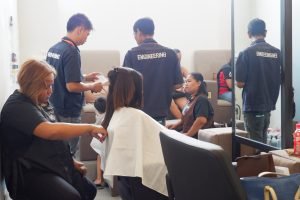
Western Visayas is one of my favorite regions in the country. It is difficult to explain but there is something about this place that makes me want to visit here often. Well, I have just been to this region twice, but I always consider going back here – everything in this place mesmerizes me. Low-cost transport, low crime rate, very accommodating people, the unfiltered spots to visit, its amazing food, and there is actually too many to mention this beautiful region located in the Visayan Island.
I have been missing this place so I wrote another travel blog and I would love to share with you the hidden beauty of the Western Visayas Region, most especially the island of Panay. As you read on this blog, I listed down some of the off-the-beaten destinations that you can visit around Panay Island apart from visiting the infamous Boracay Island, or trying out the Kawa Bath in Tibiao, Antique, or sneaking out at the Molo Mansion in Iloilo City.
Table of Contents
Understanding Panay Island
Panay Island is located in the Western Visayas region or Region VI in the Philippines. Western Visayas region is no doubt one of the biggest islands of the country. It is a place where you can mostly uncover the best white-sand beaches, find out the unexplored hidden spots, meet the most accomodating locals ever, and try some of the best local foods that can never be found anywhere. More to that, this is also where you can immerse yourself in the rich culture of the island. Panay is an island and a group of islands in the Western Visayas and is composed of 4 provinces: Aklan, Antique, Iloilo, and Capiz.
How to get to Panay Island?
Panay Island has got four airports. In fact , there are two international airports that can be found on Panay Island. These international airports are in Iloilo and Kalibo. Meanwhile, the other two airports are only operating for domestic. They are in Roxas and Caticlan. Kalibo airport would probably be the most popular one since this is the gateway to Boracay island.
Getting around Panay Island
It is really easy to get around Panay Island. Roads are linked to each island which leads to all amazing spots on the entire island. It is convenient to hop on one island to another since it is very convenient and possible to do it via land travel.
Either you take a bus, van, taxi, jeepney, or tricycle, you can easily transfer from one town to another town. But you have to take note that taxis are only available in Iloilo City. In terms of hopping from one island to another, you may perhaps need to ride a small boat (bangka); most especially if you are considering going to Panay’s some neighboring islands that are also part of the Western Visayas region.
You may also read: Panay Island Travel Guide
Interesting places to see.
There are so many interesting places to visit around Panay Island. Whether it is a historical site, a white-sand beach, an off-the-beaten-path destination, or a place that is yet to be discovered. So here are some of the places to visit when touring around the island.
Gigantes Island, Iloilo
Although Gigantes Island or Isla de Gigantes is becoming a popular destination in Panay, (thanks to the use of social media platform) still, this island is less crowded than Boracay. Situated in the municipality of Carles, Iloilo; composing of ten islands divided into two big islands: Gigantes Sur and Gigantes Norte. But actually, Gigantes Sur is the most-visited island since this is the most accessible.
Each island showcases the most photographed scenes that would definitely make you fall for the place. Its turquoise blue water, interesting rock formations, fine sand (even as fine as Boracay Island’s), not to mention the freshest and the most delicious scallops only on Gigantes Island . Everything in this place looks so magical.
The Miagao Church, Iloilo
Iloilo is no doubt rich in historical cultures and even old churches. Make sure to visit one of the best Baroque Romanesque Churches in the Philippines, Miagao Church. Located in the town of Miagao in Iloilo, Miagao Church is a Roman Catholic church is one of UNESCO’s World Heritage Sites . Moreover, its one-of-a-kind architectural design makes the church really stand out and popular in the city among local and foreign tourists. Not to mention the history that it tells every tourist that never fades for over the years.
If going on pilgrimage is in the field of your interest, then Miagao Church must be part of your bucketlist when touring around the island of Panay. You may also see other historical churches around Iloilo City.
Garin Farm, Iloilo
Have you thought once of how it feels like in heaven? I believe everyone does. Most of us are curious about what is like up above in heaven. We totally can’t deny the fact that we sometimes contemplate about how that place looks like. But there is a resort that will give you an opportunity to be in a heaven-like place.
Situated in the town of San Joaquin, Garin Farm Resort is also a pilgrimage site in the city of Iloilo. Although it is becoming a more popular tourist attraction, I believe many people are still not familiar with this place. As you enter the farm, you will see a lot of farm animals, plants, and trees around the area. Then as you walk further, a staircase is noticeable which would lead you to the heaven attraction – a stairway to heaven.
Either you take you the 456-step staircase or the golf cart going up to the heaven site. Once you reach the top, you will be rewarded by the beautiful overlooking view of the town of San Joaquin. More to that, it is actually an open area above so the clouds are visible up in the sky. The entire is also colored in white and even the statues of the saints that are on display. You won’t only enjoy the place, but it feels like you are in the afterlife. This pilgrimage site is would definitely take you to another level of getting reconnected with God.
Mararison Island, Antique
See the unspoiled beauty of Mararision Island located in the town of Culasi. Culasi is a town in Antique which is 4-5 hours from Iloilo City. Hidden by spectacular mountain ranges, Mararison Island (or also known as Malalison Island) is a beach destination that is 15 minutes away from the town of Culasi. The island boasts a long stretched of the white sand bar and a stunning view of the rolling hills. Its rolling hills are kind of similar to Batanes Island ‘s rolling hills which in fact Mararison Island is often called “ Batanes of Western Visayas.” In addition, you will get a chance to meet a lot of amazing locals here!
Get to see the beauty of the entire island by trekking the hills. The trekking can be done for an hour or depending on your pace. More to that, you will see some pitcher plants – one of the endangered species. Take note that you need to have a tour guide to trek the hill.
Antique Rice Terraces
View this post on Instagram A post shared by Dave: Travel Blogger (@silverbackpacker)
If you haven’t seen yet the Banaue Rice Terraces of in Ifugao, you can see Panay Island’s rice terraces instead. Witness the beauty of the terraces located in the town of Valderrama. Discover the hidden wonders of the rice terraces in Antique. The greeneries – the green valleys of the town, and its natural beauty would definitely entice you, make you feel so relaxed, help you get away from stress!
Baybay Beach, Capiz
Situated in the city of Roxas in Capiz, Baybay beach is definitely one of the must-see destinations around Panay Island. It is just not a beach destination, but it is also a food hub in the city. There are a lot of restaurants built along the road which are obviously nearby the shore.
The Seafood Capital of the Philippines – Capiz is where you can have the freshest kinds of seafood in Panay Island! Imagine having some great food in a restaurant with a great of the sea. Fresh seafood, the breeze of the calm seawater, the soft waves – you can experience all of this as you dine in at one of the restaurants at Baybay beach. Doesn’t that feel good?! You can even walk along the shore while waiting for your order.
The Sta. Monica Church, Capiz
View this post on Instagram A post shared by Roche Ahron Villena (@ahronvillena)
Built in 1774, the Sta. Monica Church is located in Panay, Capiz. This is one of the places that you must see when in Capiz. Considered as the national cultural treasure, Sta. Monica church is one of the oldest churches in Panay Island.
Its timeless beauty is unquestionable. In addition to that, this is where you can see the biggest bell (also known as Dakong Lingganay in the country. Not to mention that it is measured by 7 feet in diameter, 5 feet in height, and weighs 10.4 tons or 23,000 pounds – no doubt that the Sta. Monica’s bell is considered the biggest bell not just in the Philippines, but also in Asia .
The Ruins of Alcatraz, Capiz
Have you ever heard of the Ruins of Alcatraz? It resembles a setting in one of the famous movies, “ Maze Runner”. If you take a look at the ruins, it is kind of similar to the abandoned, infamous island jail located in San Francisco Bay in the USA.
When you visit The Ruins of Alcatraz, it would definitely take you back in time and the place itself will give an ancient vibe which you would surely enjoy it. In addition, you can take a lot of instragrammable photos in this place. One more thing that you need to know about this ruins is, it is used to be a resort but due to a huge typhoon, it got destroyed and was abandoned by the owners.
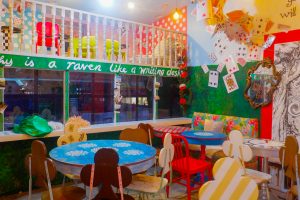
Hinugtan Beach, Aklan
View this post on Instagram A post shared by Choose Philippines (@choosephilippines)
Located in Buruanga, Aklan, Hinugtuan Beach is a boat ride away from Boracay. If you want to get away from crowded places like Boracay Island, or just want to escape from the crowd, then you can head over to Hinugtuan Beach. It might not as popular as Boracay Island, but Hinugtuan Beach also boasts a white-sand beach and sapphire blue seawater. Moreover, since the place hasn’t been packed yet with many tourists. the beach is surely still well-preserved as it becomes an ideal place for water sports activities.
Bakhawan Eco-park and Research Centre, Aklan
View this post on Instagram A post shared by SinoPinas (@sinopinas)
Apart from visiting the islands of Aklan, you can also visit The Bakhawan Forest. Upon arriving at the Kalibo airport, you can head straight to Bakhawan Eco-park since this is just a 10-minute drive from the airport. Bakhawan Eco-park and Research Center is said to be one of the most successful mangrove reforestation projects in Southeast Asia. In addition, its view is quite similar to the mangrove forest in Bantayan Island, Cebu. If you want to see a more refreshing view, you may want to visit this site as well!
Hacienda Maria, Aklan
View this post on Instagram A post shared by klyvin_doesn't_know (@junetorresss)
Another adventure awaits in the island of Panay. Located in the town of Buruanga, there is a waterfall that is worth visiting! Hacienda Maria is one of the most thrilling adventures that you can do when you are in Aklan.
If you are craving more adventures, then this place suits you. You need to hike two kilometers up a steep mountain. Then, you need to walk a few more kilometers in order to reach the area. It seems a bit challenging but it rewards you with a stunning view of the waterfall and the pleasing sound of it.
Is Western Visayas part of your bucket list? These are just some of the places to visit when traveling around Panay Island. Make sure to include these places when traveling around the island.
Latest Posts:
3D2N Ninh Binh Travel Guide: A Solo DIY Backpacking Guide
Valley view homestay: best place to stay in sapa, vietnam, 3d2n sapa, vietnam travel guide: a diy solo backpacking guide, easy japan visa application guide for filipinos, how to apply for a chinese visa for filipinos (with or without itr).
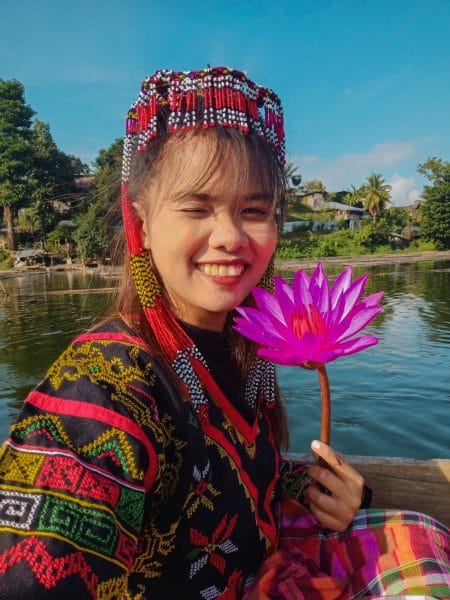
A travel blogger in the Philippines and a K-pop enthusiast, Ara Patria (The Adventuress) pursues her passion and love for traveling. She’s been blogging for years, where she writes about her own travel experiences and promotes the wonders of the Philippines. Not only does she promote the beauty of her country, but she also focuses on promoting sustainable tourism. She dreams of traveling the world and inspiring other people through her own written works and captured moments with her camera.
The Adventuress is a travel blogger with a purpose. She aims to inspire other people through her personal experiences, stories, and lenses. Outside her blogging world, she is an education, an SEO specialist, and TEFL/TESOL certified.
Join her adventures!
About the Author

Leave a Reply Cancel reply
Type your email…
Latest Posts

- Backpacking Guides
- Beauty and Lifestyle
- Food & Restaurants
- Hotels & Resorts
- International
- Kpop & K-dramas
- Personal Insights
- Philippines
- Press Release
- Solo Travel Guides
- Travel Guides & Tips
- Travel Inspirations
- Visa Guides
Recent Comments
- Ara Patria on Farm T-House: A Farm Staycation Camping Site in Laguna
- RayfromWildkamp on Farm T-House: A Farm Staycation Camping Site in Laguna
- Find out how to Apply for Chinese language Visa for Filipinos - on Beijing Travel Guide: 3 days Itinerary + Expenses
- Liezel on A DIY Travel Guide to Rotypeaks, Bukidnon
- Ara Patria on The Ultimate Island Hopping Guide in Balabac, Palawan
You may also like these

Map of Panay Island — Best attractions, restaurants, and transportation info
What’s on this map.
We’ve made the ultimate tourist map of Panay Island, Philippines for travelers! Check out Panay Island’s top things to do, attractions, restaurants, and major transportation hubs all in one interactive map.
Visiting Panay Island? See our Panay Island Trip Planner.
How to use the map
Use this interactive map to plan your trip before and while in Panay Island. Learn about each place by clicking it on the map or read more in the article below. Here’s more ways to perfect your trip using our Panay Island map:
- Explore the best restaurants, shopping, and things to do in Panay Island by categories
- Get directions in Google Maps to each place
- Export all places to save to your Google Maps
- Plan your travels by turning on metro and bus lines
- Create a Wanderlog trip plan (link to create a trip plan for the city) that keep all the places on the map in your phone
- Print a physical map to bring it on your trip

Top 18 attractions in Panay Island
White beach, bakhawan ecopark.
Navigate forward to interact with the calendar and select a date. Press the question mark key to get the keyboard shortcuts for changing dates.
Navigate backward to interact with the calendar and select a date. Press the question mark key to get the keyboard shortcuts for changing dates.

Casa Mariquit
Nelly garden mansion, ariel's point.

Track your travel spending and split costs with friends
Plan your trip. Keep your budget organized. Split the cost between tripmates. Wanderlog does it all.

Diniwid Beach Rd
Molo church, sm city iloilo, santa monica parish - panay church, jaro metropolitan cathedral, molo mansion, palina greenbelt ecopark, mt. igmatongtong, brgy. capnayan, laua-an, antique, agho island, camiña balay nga bato.

Don’t forget to pack anything
Stay organized with a to-do list, packing list, shopping list, any kind of list.

Willy's Rock
Jawili beach, iloilo museum of contemporary art (ilomoca), top 10 restaurants in panay island, breakthrough restaurant.

The Sunny Side Cafe
Nonie's restaurant, tib market (tindahan it boracay), dova brunch cafe, aplaya the beach bar & italian food, dos mestizos restaurant, salt gastro lounge, roberto's, transportation in panay island, nearby airports, bacolod–silay international airport, roxas city airport, iloilo international airport, kalibo international airport, godofredo p. ramos airport, highways and major roads.
- Pan-Philippine Highway (AH26)
- Tumaguil Road
- Iloilo-Capiz Road (New Iloilo-Capiz Road)
- Sen. Benigno Aquino Jr. Avenue (Iloilo Diversion Road)
- National Highway (Iloilo-Antique Road)
- Lanot-Manapla Road
- Malabog-Sibuyan Road
- Kalibo-Capiz Road
- Makiling Road
- Ma. Clara Lobregat Highway (formerly Jaro-Lapuz Road)
Top searches in Panay Island
What's the weather like in panay island.
It depends on when you visit! We've compiled data from NASA on what the weather is like in Panay Island for each month of the year: see the links below for more information.
- Weather in Panay Island in January
- Weather in Panay Island in February
- Weather in Panay Island in March
- Weather in Panay Island in April
- Weather in Panay Island in May
- Weather in Panay Island in June
- Weather in Panay Island in July
- Weather in Panay Island in August
- Weather in Panay Island in September
- Weather in Panay Island in October
- Weather in Panay Island in November
- Weather in Panay Island in December
Explore nearby places
- Panay Island
- New Washington
- San Enrique
- Santiago City
- Barotac Viejo
- Barotac Nuevo
All related maps of Panay Island
- Map of Roxas City
- Map of Ma-ayon
- Map of Pilar
- Map of Mambusao
- Map of Batan
- Map of Dumalag
- Map of Jamindan
- Map of Carles
- Map of New Washington
- Map of Passi City
- Map of Balete
- Map of Kalibo
- Map of Ajuy
- Map of San Enrique
- Map of Concepcion
- Map of Banga
- Map of Numancia
- Map of Lezo
- Map of Santiago City
- Map of Dingle
- Map of Duenas
- Map of Libacao
- Map of Barotac Viejo
- Map of Tangalan
- Map of Madalag
- Map of Balud
- Map of Ibajay
- Map of Pototan
- Map of Barotac Nuevo
Panay Island throughout the year
- Panay Island in January
- Panay Island in February
- Panay Island in March
- Panay Island in April
- Panay Island in May
- Panay Island in June
- Panay Island in July
- Panay Island in August
- Panay Island in September
- Panay Island in October
- Panay Island in November
- Panay Island in December

- Itinerary + map in one view
- Live collaboration
- Auto-import hotels and reservations
- Optimize your route
- Offline access on mobile
- See time and distance between all your places

IMAGES
VIDEO
COMMENTS
3. Ariel's Point. Ariel's Point is an eco-adventure destination located a scenic boat ride away from Boracay Island. With five cliff-diving platforms (from 3 to 15 meters) and ample opportunities for swimming, snorkeling, kayaking, and paddleboarding in a tropical setting, Ariel's Point is the perfect destination for Boracay travelers who want ...
3. Ariel's Point. 1,412. Points of Interest & Landmarks. Ariel's Point is an eco-adventure destination located a scenic boat ride away from Boracay Island. With five cliff-diving platforms (from 3 to 15 meters) and ample opportunities for swimming, snorkeling, kayaking, and paddleboarding in a tropical setting, Ariel's Point is the perfect ...
THE 10 BEST Panay Island Parks & Nature Attractions. 1. White Beach. I loved this beach!! Station 1 is nice and quiet, Station 2 is where D'Mall is at so it is busy and the locals are hu... 2. Yapak Beach (Puka Shell Beach) Unlike the bustling White Beach, Puka Shell Beach offers a quieter and more tranquil atmosphere, perfect for unwinding.
2. Yapak Beach (Puka Shell Beach) The second largest beach on Boracay, this popular destination is also called Puka Shell Beach after the prevalent white seashells. 3. Ariel's Point. Ariel's Point is an eco-adventure destination located a scenic boat ride away from Boracay Island. With five cliff-diving platforms (from 3 to 15 meters) and ample ...
Top Things to Do in Panay Island, Philippines: See Tripadvisor's 190,534 traveller reviews and photos of Panay Island tourist attractions. Find what to do today, this weekend, or in May. We have reviews of the best places to see in Panay Island. Visit top-rated & must-see attractions.
Boracay Island Hopping Adventure w/ Cliff Jumping + Sunset Cruise. Full-day Tours. from ₱2,999 per adult. 3. Willy's Rock. 1,372. Points of Interest & Landmarks. By Travel40308974752. Beautiful rock in the middle of the sea, you can climb easy on it and take sone pictures with the Maria statue.
11 | Visit nearby attractions. Panay island is surrounded with other islands worth exploring. Of course, the world famous Boracay Island is approximately 10 to 15 minutes away from Caticlan Port. Guimaras Island, the Mango Capital of the Philippines, is 10-15 minutes boat ride away from Iloilo City.
Visit Panay Island and check out this list of some of the best things to do in Panay Island, Philippines. 1. See the bell of Sta. Monica Parish - contributed by Tour Guide, Cherald Padojenog. Sta. Monica Parish, or Panay Church, has a simple stone facade with two small statues on either side of the door. On one side of the structure is the bell ...
About Panay Island. Most travelers know Panay as the jumping-off point for the white-sand, turquoise-water beaches in Boracay. But if you've got a few extra days to explore, you'll find a whole lot more to the Filipino island—from the rugged mountains and rivers of Antique to the history and architecture of Iloilo City.
The second largest beach on Boracay, this popular destination is also called Puka Shell Beach after the prevalent white seashells. 3. Ariel's Point. Ariel's Point is an eco-adventure destination located a scenic boat ride away from Boracay Island. With five cliff-diving platforms (from 3 to 15 meters) and ample opportunities for swimming ...
About Panay Island. Most travelers know Panay as the jumping-off point for the white-sand, turquoise-water beaches in Boracay. But if you've got a few extra days to explore, you'll find a whole lot more to the Filipino island—from the rugged mountains and rivers of Antique to the history and architecture of Iloilo City.
The best months to visit Panay Island, and most of the Philippines, are thus December - June, when the weather is generally dry and sunny. Panay Itinerary: The Stops. ... Roxas is a chilled-out city with some interesting tourist attractions for history and culture fans. Seafood Capital.
What are the top attractions to visit in Panay Island? The top attractions to visit in Panay Island are: White Beach; Camina Balay nga Bato; Yapak Beach (Puka Shell Beach) SM City Iloilo; ... Panay Island Attractions Information. Attractions: 550: Attraction Reviews: 29,418: Attraction Photos: 31,194: Local Time: Monday 12:07 am $ AUD.
2. Yapak Beach (Puka Shell Beach) The second largest beach on Boracay, this popular destination is also called Puka Shell Beach after the prevalent white seashells. 3. Ariel's Point. Ariel's Point is an eco-adventure destination located a scenic boat ride away from Boracay Island. With five cliff-diving platforms (from 3 to 15 meters) and ample ...
5.1 The Diverse Tourist Attractions of Panay. Tourism in Panay is as diverse as the island itself, offering a blend of natural beauty, cultural heritage, and modern amenities. The island's stunning landscapes range from pristine beaches and secluded islands in Aklan and Antique to the lush mountains and rivers of Capiz and Iloilo.
Here are the 5 top tourist attractions in Panay: #1 - Bakhawan Eco-park and Research Centre (Kalibo): a 220-hectare mangrove reforestation project created in 1990 in Kalibo, Aklan that features a 1.3-kilometer long bamboo bridge. The bridge takes tourists into the forest to see a sanctuary of birds and marine species.
Ariel's Point is an eco-adventure destination located a scenic boat ride away from Boracay Island. With five cliff-diving platforms (from 3 to 15 meters) and ample opportunities for swimming, snorkeling, kayaking, and paddleboarding in a tropical setting, Ariel's Point is the perfect destination for Boracay travelers who want to experience the raw beauty of the Philippines while also having ...
Things to Do in Panay Island, Philippines: See Tripadvisor's 173,796 traveler reviews and photos of Panay Island tourist attractions. Find what to do today, this weekend, or in May. We have reviews of the best places to see in Panay Island.
Built in 1774, the Sta. Monica Church is located in Panay, Capiz. This is one of the places that you must see when in Capiz. Considered as the national cultural treasure, Sta. Monica church is one of the oldest churches in Panay Island. Its timeless beauty is unquestionable.
See 18 top attractions and places to visit, 10 best restaurants, and more on our interactive tourist map of Panay Island
By SweetLavyah. With an entrance of Php 150.00 pesos you can tour the whole house and experience the thick and sweet tsokolate drink... See tours. 5. Bakhawan Eco-park and Research Centre. 128. Nature & Wildlife Areas. By manrossa. This 1km mangrove eco park in Kalibo, Aklan is a must visit.
3. Ariel's Point. Ariel's Point is an eco-adventure destination located a scenic boat ride away from Boracay Island. With five cliff-diving platforms (from 3 to 15 meters) and ample opportunities for swimming, snorkeling, kayaking, and paddleboarding in a tropical setting, Ariel's Point is the perfect destination for Boracay travelers who want ...
4. Islands. By Trail311464. Batbatan Island in Culasi, Antique Province is one of the best bird watching sites where you can see several species of... 12. Nablag Islet. 3. Islands. By boracaytravellers.